
On the 25th anniversary of the Columbine shooting, our series continues with a look at how school safety, media coverage and emergency communications changed P16-24


On the 25th anniversary of the Columbine shooting, our series continues with a look at how school safety, media coverage and emergency communications changed P16-24
El Paso joining in fight about communication with federal authorities
BY MCKENNA HARFORD MHARFORD@COLORADOCOMMUNITYMEDIA.COMDouglas and El Paso counties are suing Colorado over laws that prevent local law enforcement agencies from working with federal immigration o cers, arguing the ban hurts public safety.
Two laws, passed by state lawmakers in 2019 and 2023, prevent police from being able to arrest or detain people for civil immigration violations, as well as share information or have agreements with federal immigration agencies.
“We see it as the duty of the county to push back against these state laws that prohibit us from working with federal authorities to keep Douglas County and our communities safe,”
Douglas County Commissioner George Teal said, anked by other
county o cials in a news conference.
Douglas County Undersheri David Walcher said the laws tie the hands of deputies and hinder enforcement, noting the sheri ’s ofce has the ability to work with every other federal agency, such as the Drug Enforcement Administration.
“What we need is communication and cooperation and, probably most important, information,” Walcher said. “I’d really like to see more information sharing so we can act upon what we learn from our federal partners and they can learn from us.”
Walcher said the sheri ’s o ce should be able to share public information with U.S. Immigration and Customs Enforcement, including jail rosters and information pertinent to public safety.
“Shame on the State of Colorado for telling Douglas County and Sheri (Darren) Weekly how to run his jail,” he said. “If the State of Colorado wants to enhance public safety in our communities, they need to enhance penalties for things like car thefts, crimes with deadly weapons,
Help tell our news reporters and editors which issues to focus on in 2024. It only takes a minute. Thank you!




Douglas County Undersheri David Walcher speaks at a press conference announcing a lawsuit against the state for laws that prevent law enforcement agencies from working with federal immigration o cers.
people who elude the police. at helps us.”
County o cials couldn’t say how many migrants are in the county. Teal claimed state laws prevent the county from knowing a total count.
But Commissioner Abe Laydon suggested that some of the migrants, initially dropped o by o cials in Texas in Denver, may have moved across county lines. Some 40,000 migrants have been bused to Denver and o ered assistance by city agencies, according to Denver.
“ inking that 40,000 people can be bused here and not somehow bleed into Douglas County is not common sense,” he said.
Laydon said some migrants could pose a threat. He pointed to an incident in April 2023 where a man was abducted from a park and ride in Lone Tree by two men, who Layden said are Venezuelan migrants. e man was able to escape and police arrested Brandon Graterol-Castro and Deivis Jose Chavez Pinto, charging them with kidnapping, assault and motor vehicle theft.
According to a 9News report,
o cers believe the kidnapping stemmed from a debt. Weekly said it was an isolated incident, and not a random attack.
e lawsuit, led in the Denver District Court, seeks to prohibit limitations on local government cooperation with federal agencies, asking a judge to nd House Bill 19-1124andHouse Bill 23-1100 are unconstitutional.
Douglas County Attorney Je Garcia, who is con dent the suit will be successful, said the outcome could bene t the state and the country.
“We hope to create an environment where local governments and the state can once again cooperate with the federal government and address a national crisis,” Garcia said. “We hope that by the work we do, we’re giving everyone a blueprint on how we can address a national problem.”
Commissioner Lora omas said the goal is to give law enforcement as many “tools” as possible.
“What I see in Denver is not what I want to see in Douglas County,” omas said.
kidnapping said a Denver limicoopera 19-1124andunconstituGarbe could environand cooperate adsaid. do, on probsaid enforcement what County,”
Over the last 20 years, I have listed many homes on the MLS, and when doing so it’s important to list the energy and water-saving appliances of the home in the MLS. Advertising a “high efficiency washer and dryer” became more and more common.
But now there are three generations of high efficiency that I can think of.
20 years ago, high efficiency meant front-loading. This reduced the amount of water needed compared to the old top-loading washers. New detergents were introduced for them.


Then, unexpectedly, a top-loading machine with no agitator took the title. Who knew that you could clean clothes that way? The washing machine saved water because it sensed the amount of clothes in the machine and adjusted the water use accordingly.
But what about the clothes dryer? Over the years you really could only choose between gas dryers and electric dryers, although I loved to point out the “solar dryer” in the backyard — a clothesline for drying clothes outdoors. Meanwhile, it has always bothered me
how much hot air a dryer exhausts to the outdoors in the dead of winter instead of using that heat inside the house. An analog solution to that is the indoor lint trap. It is filled with water which traps the lint, and the warm air is exhausted into the room. The device is typically used when a vent to the exterior of the house is unavailable, but you might choose to use one because you want to capture the dryer’s heat instead of sending it outdoors. Remember, too, that the air which your home exhausts must be replaced by outside air coming in through cracks, bathroom/kitchen exhaust piping, etc. So you are not only losing that heat in the winter, you are drawing in cold air from outside. There are multiple solutions to this dilemma. In addition to using the lint trap described above (in which case you’ll want to seal the exhaust pipe to outdoors), you can replace your existing dryer with what’s called a condensing dryer, typically using a heat pump instead of gas or traditional resistancebased electrical heating.
A condensing dryer has the ability to keep the heat within your house through







internal processing. It’s also called a ventless dryer. Google it to learn more and to see where you can buy them (everywhere) and what they cost.
Heat pump dryers use less electricity than conventional dryers because they use an evaporator to remove the moisture and then recycle the warm air so they don't have to heat the ambient air again.
Because a heat pump dryer is ductless, you don’t have to worry about lint buildup in the vent pipe, which could lead to a fire. There are 13,000 household fires caused by clothes dryers every year in the U.S.
Because heat pump dryers are ductless, they can be installed in any room. Perhaps you’d like to have one in your walk-in closet or ensuite bathroom.
A secondary benefit is that because heat pump dryers operate at a lower temperature, your clothes will last longer.
If you want to save space and don’t like stackable washers/dryers, you can buy an all-in-one machine that does both.
TheCoolDown.com offers other suggestions for saving energy and water, and reducing your personal carbon footprint. The single biggest savings is by using cold water unless absolutely necessary.
Also, dryer sheets and fabric softeners, they say, work by adding petroleumbased chemicals to your clothing, which can cause eczema. Dryer balls are a onetime purchase that work better. (We use them.)
We buy detergent in gallon-size plastic jugs, but they suggest buying powder instead since it’s questionable whether that jug, made from petroleum, will be recycled, even if you put it in the your recycling cart.
This article and the one below appeared in last week’s Denver Post column.
If You’re Thinking of Renovating a Home Built Before 1980, Consider Possible Presence of Asbestos
You’d be amazed how many older building materials included asbestos. If you disturb asbestos, making it airborne, you endanger the health of yourself, your workers and your children.
Because asbestos doesn’t burn, it was used to wrap pipes and ductwork in older homes, and in other less obvious materials. If your home has popcorn ceilings which you want to remove, you should definitely test for asbestos first.
Asbestos is also present in older adhesives used with vinyl flooring. Older gas fireplaces had inserts made of asbestos. It is also found in older roof shin-
gles and siding, in certain Chinese drywall boards, in vermiculite insulation, and in some ceiling tiles.
Although asbestos materials are safe when left alone, disturbing them can be hazardous. See my post of this at http:// RealEstateToday.substack.com for useful links on this topic.
Over the past two decades this column has appeared in the Denver Post, and during that time I’ve written about every conceivable topic related to real estate, You can find and search that archive online at www.JimSmithColumns.com
If



For many, a co ee mug is just a co ee mug. But for clients at Valley Hope Addiction Treatment and Recovery in Parker, a mug represents a turning point in their lives.
“ is place is so dear to my heart,” Micki Gallagher said, clinical program director. “Getting into recovery has opened up doors in my life that I never thought possible.”
When patients complete the 30 day program, they decorate a coffee mug that often includes the date of their sobriety. e mugs are then hung on a mantel. After one year of sobriety, the person can come back and pick up their mug.
“
ey also get the chance to stand in front of the current addiction group and talk about the struggles and success of their rst year of sobriety,” said Scott Spielman, executive director. “It’s really powerful to the current group and just a really neat process.”
To honor those who have lost their lives, a black ribbon is placed on a mug handle.
Valley Hope Addiction Treatment and Recovery in Parker, a nonpro t organization and is nationally accredited, has helped adults through drug and alcohol issues since 1989 with an individualized residential treatment program.
With a treatment approach that blends the 12-step philosophy with innovative clinical methods, the program involves medical detox, therapy, addiction education, relapse prevention planning and long-term recovery strategies.
e organization also holds renewal days once a month where alumni of the program — ranging from one year to 20 years of sobriety — come in and share their stories with the current treatment group. “ e kinds of things you can say to people in just a half a minute conversation can impact their lives for the rest of their lives,” said Gallagher.
For Gallagher, those words came in 2002. ey were, “Come right now.”
at’s when Gallagher was struggling with addiction issues. She was often hospitalized and, one of those times, a social worker at the hospital mentioned Valley Hope. inking about the day some-




one at Valley Hope told her to come immediately brings tears to Gallagher’s eyes.
“Coming in the door here, it was the rst place I had ever gone that cared for me,” said Gallagher. “ ey treated me with respect. ey treated me as a human being, which I learned later is a core tenet of Valley Hope, that we treat human beings, we don’t treat addicts.”
After recovery, Gallagher became a certi ed addiction counselor and began training at Valley Hope saying it was the rst job she had where it didn’t feel like work. In 2004, Gallegher began to see the organization from other angles as she went on to be an admissions counselor, a residential counselor and an outpatient counselor before becoming the clinical program director.
“I got to give back to people the things that were given to me,” said Gallagher.
Gallagher said since she began working at Valley Hope, there has always been talk of expansion. Nearly 20 years later, the $17 million expansion and renovation project to expand the availability of substance use disorder treatment services in the Denver area is nearing completion.
e expansion aims to improve e ciencies of treatment services, reduce the wait list for admissions,
improve safety and help more people.
Due to the demand for services and lack of recovery room detox beds, the expansion will include a new detox wing that will have 16 beds, doubling the amount of beds, as well as a living/dining area and a nursing station. e wing will continue to have 24/7 nursing and a physician.
e average detoxi cation can take three to ve days, said Spielman, but it also depends on what the individual is detoxing o of. Valley Hope provides medically-monitored detoxi cation as symptoms can be severe.
“It’s an essential rst step of healing from addiction that allows the person to focus on treatment,” said Spielman. “To be able to provide everything in one setting, I think is ideal.”
In addition to a centralized nursing station, the Parker location will be adding 14 residential beds, bringing it to a total of 54 beds, in which two rooms are being made to be compliant with the American with Disabilities Act.
Other renovations include the remodeling of the kitchen, dining room area, counseling and therapy rooms, community room, non-denominal chapel and the wellness room will include yoga and tness
equipment. e organization plans to upgrade outdoor and amenity spaces.
e great room will have some leisure and recreation activity, however it is currently functioning as their lecture hall.
“We do cognitive behavioral and process groups, gender groups, but we also do lectures, educational, motivational and engagement,” said Spielman.
After 30 days, patients will get referrals to outside resources such as an outpatient treatment in Centennial that o ers intensive outpatient treatment, sober living facilities and more.
Spielman said the organization has discounted rates, contracted payments with insurance and patient scholarships that are often contributed by alumni.
“One of our primary focuses is trying to meet people where they’re at,” said Spielman. “We’ll do everything we can if someone knocks on the door and says ‘I need help and I’m ready’ we’ll gure it out one way or another.”
Valley Hope also has family programs and specialized treatment for women and children or who are pregnant.
“Recovery will change your life in ways you have no idea,” said Gallagher.



Shopping H FOOD H EXHIBITS H MUSIC H RIDES



• Enjoy your Favorite Festival Food
• Shopping Marketplace
• Music on Four Stages
• Street Performers
• Carnival Rides for the Whole Family
• Free Kids Crafts
• Silent Disco – Dance, Dance, Dance!
• Get Dizzy in a Water Bubble
• Bungy Jumping
• Jump and Slide on the In atables
• Nurf Terf Battles (Nurf version of Paintball)
AIR ACADEMY CREDIT UNION
EAST MUSIC Stage – Live Music ALL Day
Friday 8 pm – 10 pm Sisters of Rock
Saturday 8 pm – 10 pm
Shelvis and the Roustabouts
Sunday 6:30 pm – 8 pm
Ryan Chrys & the Rough Cuts
THURSDAY, JUNE 13
1 pm – 10:30 pm: Carnival Only
FRIDAY, JUNE 14
Fri 1 pm – 10:30: Carnival
Fri 4 pm – 10:30 pm: Fesival
SATURDAY, JUNE 15
Sat 10 am – 10:30 pm
SUNDAY, JUNE 16
Sun 10 am – 8:30 pm
MAIN STAGE – Live Music ALL Day
HEADLINERS:


Friday, June 14 presented by 8:00 pm – 10:30 pm: Kory Brunson Band
Saturday, June 15 presented by 8:30 pm – 10:30 pm: Wash Park Band
Sunday, June 16 presented by 5:30 pm – 8:30 pm: That Eighties Band

®
parkerdaysfestival.com

CARNIVAL RIDES & GAMES:
presented by

BUY DISCOUNTED UNLIMITED CARNIVAL RIDE WRISTBANDS ONLINE
Single-Day Unlimited Carnival Rides: $35 each
Good any one day during the festival
Sold online through 12 noon Wed. June 12
4-Day MEGA Unlimited Carnival Rides: $89 each Good all 4 days of the festival
PURCHASE DURING THE FESTIVAL
Single-Day Unlimited Carnival Rides: $40 each
TICKETS FOR INDIVIDUAL RIDES
Food, Beverage & Ride Tickets may be purchased at Festival Ticket Booths.
CORE ELECTRIC COOPERATIVE
Community Stage – Entertainment ALL Day
supported by Allegro Music
Parker Days Festival is brought to you by the Parker Area Chamber of Commerce Foundation
About 10% of the $1 million Douglas County received as a payout after the sale of the Denver Broncos could go to improve mental health in schools — or other youth support that teen advisers may advocate for.
Commissioner Abe Laydon said some young people expressed desire for a “dedicated mental health space” in schools. “ e concept is very simple: If you have a broken arm, you go to the nurse’s o ce. If you have a tough mental health day, you have a space where you can go and get better,” Laydon said at a recent meeting.
Local youth were tapped for input as o cials weighed how to distribute the county’s slice of revenue triggered by the 2022 sale of the



Broncos. e county’s payout stems from a tax plan in metro Denver that helped build Mile High Stadium, now called Empower Field at Mile High.
After teens expressed their preferences, Douglas County o cials routed the funding to support a long list of youth activities programs.
But about $110,000 of the funding remains unallocated, and county o cials have said they’ll spend the money on mental health programming since their youth advisers identi ed that topic as their top pri-
at could look like a space for peer support, where older students mentor younger students, talking peer to peer about mental health struggles, Laydon said as an exam-


ple. Such spaces sometimes o er iPads or therapy dogs and can help people decompress, he added.
A couple organizations have inquired about the funding, according to county sta , who discussed other options with the county commissioners.
At the meeting, commissioners did not decide where the money should go. Instead, they threw the question back to theirteen advisers for more discussion.
As one of seven counties in the Metropolitan Football Stadium District, Douglas County was awarded the funds that, legally, must be used for youth activities programs, according to the county.
The district is a government body that was created for the purpose of planning, acquiring land and con -
structing Mile High Stadium. It was authorized to collect a sales tax of one-tenth of 1% throughout the district’s area from 2001 through 2011.
e recent funding for youth activities comes from the $4.65 billion sale of the Denver Broncos to the Walton-Penner Group, which resulted in a $41 million refund to the seven counties and 40 municipalities that helped fund the stadium.
e funds were to be shared with Adams, Arapahoe, Boulder, Broomeld, Denver, Douglas, and Jefferson counties and the cities and towns within them. Douglas County received about $940,000.
From organizations seeking a piece of the Broncos sale funding in Douglas, the county received 45 grant requests that totaled about $1.8 million. at means the youth advisers and county o cials had to gure out how to whittle the size of the requested funding down by about half.
Where money has gone so far
Made up of young people, the Douglas County Youth Commission advises the county’s elected leaders on matters pertaining to youth and teens.
Out of the 45 grant requests, 31 youth activity programs won funding. Some of those include:
• A “Save Teen Lives - Teen Crash Avoidance” program from the South Metro Safety Foundation
• erapy camp for families with disabilities, a program from Colorado Institute of Developmental Pediatrics Inc., also called Adam’s Camp
• And mental health training from an organization called Happy Crew.
For a full list of programs that received funding, see the county’s webpage at tinyurl.com/DouglasBroncosFunds.
e youth commission and Douglas County Youth Initiative reviewed the proposals and recommended about $830,000 in funding,
leaving about $110,000 remaining. County commissioners presented the checks during a meeting in late January.
Looking forward
County o cials had announced in January that the remaining money would “be retained for future investments in innovative mental health programming.”
At the meeting of county o cials in April,George Teal, one of the county’s other two elected leaders, said he wanted to hear from the youth commission again about how to spend thefunding. He also noted that the county leaders can still make the nal decision on what to spend on.
e timeline for deciding how to spend the money isn’t clear.
“Important to note that there is no deadline imposed by e Stadium District for the expenditure of the funds,” a county spokesperson told the Douglas County News-Press.




































Colorado Community Media is hiring an Operations Assistant to work with managers and staff to ensure tasks are completed as needed.
We believe that a creative, learning environment staffed with talented people who want to grow and utilize the newest and best tools will result in a dynamic and successful culture that has a positive impact on our clients’ businesses and our community.
Our brand is one of the most trusted in the communities we serve. We’ve built this reputation by providing award-winning news coverage and top-notch customer service, and by being engaged in our communities at all levels.
The ideal candidate will possess the following:
• Be an excellent multi-tasker working on several projects simultaneously.
• Be deadline oriented.
• Possess an understanding of all Microsoft Office products.
• Perform administrative tasks i.e. updating reports, delivering items as needed and more.
• Excellent customer service and communication skills.
Join our team, working from our Englewood office and remote. This position offers competitive pay starting at $17.50/per hour and a comprehensive benefits package that includes medical, dental, vision. Life and paid holiday, vacation, sick and personal time.
We’re committed to building an inclusive organization that represents the people and communities we serve. We encourage members of traditionally underrepresented community to apply, including people of color, veterans, LGBTQ people and people with disabilities.
Interested applicants can submit a resume and cover letter with references to VP of Sales and Advertising
Erin Addenbrooke at eaddenbrooke@coloradocommunitymedia.com
On a Friday evening in March, a young boy sold handmade origami in a boutique. His father played vinyl records nearby. Patrons shopped around, munched on snacks and enjoyed the ambience before moving on to the next shop.
It was a Final Friday, a monthly event that a group of local business owners launched to bring more activity to historic downtown Littleton. e idea is similar to Denver’s First Friday Art Walks on Santa Fe Drive, except it happens on the last Friday of each month and features more shops than galleries.
About 15-20 shops and restaurants stay open for the action from 5 p.m.-8 p.m. to create a fun atmosphere. ere are specials and discounts to be had, complimentary snacks and drinks to sample and random activities and popups, like the origami stand. ere was even a decorate-your-own-hat station one month.
Jessie Mullins, owner of J Claire Women’s Fashion, is one of the business owners who helped start Final Fridays.
“As much as this is for us, and for our downtown, and for economy, and for small business and all those beautiful things — it’s also for the guests,” she said. “It’s for the residents. It’s for the kids. It’s for whomever. It’s for memories and experience and having fun.”
e group that started Final Fridays currently consists of six women who own shops on Main Street, South Prince Street, West Alamo Avenue and South Nevada Street. ey started putting on the events last summer as a way to bring excitement in the wake of the COVID-19 pandemic.
e idea was to have a bunch of small, fun things happening throughout downtown to inspire people to wander and explore di erent shops, said Margie Drake, who owns Colorado Frame & Savvy Stu .
ey chose to host the event on the last Fridays of the month, instead of “First Fridays,” so as to not compete with similar events in Denver and other nearby cities.
ey realized that when they collaborate with each other, instead of competing, they all do better as businesses.
“We believe that rising tides lift all


boats,” said Ti any Norton, who owns Juniperseed Mercantile.
e group communicates with local businesses through in-person conversations and yers and is interested in having as many businesses participate in the events as possible.
For many of the women, nding a community of business owners who want to support each other has been a highlight of the initiative. Running a business can be exhausting, hard work, they said, and nding a community of support has been a game-changer for them.
“I think it’s really cool to know that we have each other’s backs,” Norton said. “We’re helping each other out, like this is what I’ve been looking for for three years.”
Other organizing business owners include Rana Ferrebee from Sweet re Boutique, Kelsey Riley from Elsewear Collective and Jodie Clark from Lollygag Antiques & Boutique.
As the weather gets warmer, the women said they plan to start having more artists involved in the events, potentially with people painting outside along the streets. In May, they also plan to have poetry performances.
e Littleton Downtown Development Authority supported the group in getting a banner on Main Street to advertise the events, and the Littleton Merchant’s Association helped fund the rst few monthly events. At this time, the business owners said they are largely funding the initiative on their own.
e next Final Friday will take place from 5-8 p.m. on April 26. Visitors can visit the group’s Instagram page @nal_fridays_littleton to see a lineup of participating businesses each month.
be board the


“ e board consciously responded to community feedback asking for a more transparent process,” he said. “As a result, the board is calling a special meeting to publicly interview all interested parties to ensure the focus is on candidate quali cations.”
According to the district’s bylaws and state law, any vacancy occurring on a special district board shall be lled by a vote of the remaining board members.
e selected candidate will serve the remainder of Pye’s term, which

ends in 2025, according to the district.
At the board’s April 17 meeting, Vice Chair Pam Eller read a statement announcing the resignation of Pye, who was not present at the meeting, Grubb said. A press release from the district said Pye chose to step away from her role to focus on her health.
During Pye’s time on the board,
When it comes to decks, think outside the square.


she supported the renovation of three outdoor pools, the opening of the South Suburban Sports Complex and the completion of the 2022 Master Plan Update, according to the district.
e Centennial Citizen has attempted to reach Pye for comment.
Applications for the board seat will be available on the district’s website on April 19 and must be submitted
by interested candidates by 5 p.m. on May 15. After reviewing applications, the board will publicly interview all candidates at a special meeting at 6 p.m. on May 22.
Grubb said the completed candidate applications will be posted in the board packet for the May 22 meeting.
At the conclusion of the interviews, board members will vote on a person to ll the vacancy. Grubb said the board expects to swear in the new board member at its June 12 regular meeting.
e Board of Directors is composed of ve members who serve staggered four-year terms, with a term limit of eight years, the district’s website says. e board governs the 46-square-mile district that includes Littleton, Sheridan, Lone Tree, and parts of Centennial, Douglas County, Je erson County and Arapahoe County.
To be eligible to serve on the board, a candidate must be registered to vote in Colorado. ey also must be a resident of the district, own taxable property in the district or be married to or in a civil union with someone who owns taxable property in the district.
Candidates can submit applications via email to jking@ssprd.org, or via mail or in person to the South Suburban Sports Complex at 4810 East County Line Road. Mailed applications should be addressed to Attn: Jennifer King, 4810 East County Line Road, Littleton, CO 80126.





subscribe call 303-566-4100
A residential development involving 84 residential lots in the Looking Glass community is one step closer to being nalized. Parker’s Town Council unanimously approved a preliminary plan in the Hess Ranch Planned Development for the neighborhood.
Located near Looking Glass Community Park and a Parker Water and Sanitation easement, Dream Finders Homes plans to create attached singlefamily homes with a duplex design, including landscaping on nearly 17 acres of undeveloped land.
“Single family housing is abundant, stacked multifamily is abundant,” Councilmember Joshua Rivero said. “But duplexes and row houses and the like are needed.”
Steve Allen, a landscape architect with Henry Design Group said there will be three access points to the neighborhood and a 30-40 foot landscape bu er will be provided along Stroh Road to the north.
“Each home faces the shared landscape corridor and will be alley-loaded with full depth driveways providing access to a two car garage,” Allen said. “ e driveway-apron in combination with the garage provides four parking spaces for each home.”
Additional guest parking will be available on the public street as well as 14 o -street parking spaces.
“It’s not just the town that’s putting in the roadway,” Councilmember Laura Hefta said. “ e developer is responsible for all that infrastructure as well as they have to go through a great deal of planning with Parker Water, with the town, with sometimes Douglas County.”
e three acres of landscaped areas within the residential development will include over 200 trees, interior courtyards that each block of homes will front, benches and dog waste receptacles along the internal sidewalk network.



tures, a playground, a dog park, a basketball court, four pickleball courts, two large multi-use sports elds and access to two regional trails, Allen said. Dream Finders Homes will address the o cial design through a nal plat application which will look at lot design, landscaping, infrastructure and more.

ramps will be reconstructed to increase pedestrian mobility and be compliant with the Americans with Disabilities Act.
To make these roadway and sidewalk improvements to Lincoln Avenue between Keystone Boulevard and Parker Road, and on Jordan Road between Stonegate Parkway and Lincoln Avenue, the town needs to acquire property including the Sonic Drive-In and Guiry’s art supply store.
Funded by the Highway and Streets Capital Projects Fund, the land purchase will cost $271,725.
“Heights, density and setback for the proposed housing product are required to be consistent with the town’s design standards and the planned development guide will be reviewed during the nal plat,” Julia Duncan, an associate planner with the town, said.



e sidewalk network anticipates a pedestrian connection to the adjacent 25-acre community park at the intersection of Duval Street and Duval Court , which is planned to be dedicated to the town at a later date. Park amenities include shade struc-
In other council business, the town is working on nal construction drawings for the upcoming Lincoln Avenue and Jordan Road widening project. e roadways will be expanded from four to six lanes and sidewalks and curb
“It’s important to note that the town will and has to pay when things are needed for public improvement,” Rivero said. “We don’t just grab land and build stu we need on it, we compensate. I’m glad to see we are negotiating with private property owners.”


e Elbert County Fair Board is hard at work preparing for this year’s county fair, which runs from July 27 to Aug. 4. is year marks Elbert County’s 90th annual county fair and its 150th birthday, or sesquicentennial.
Even though the fair doesn’t start until the end of July, the fair board works year-round making sure everything is in place. Vendor applications, possible sponsors, the theme, and so much more is being nalized. Elbert County Fair Board President Tammi Scheider proudly said that “Many people will tell you that the fair is the best week of the summer.”
“ e objective of the Elbert County Fair is to showcase our rich and rural heritage, highlight livestock production, consumer science, and business enterprise in Elbert County,” she added. “ e fair serves as an excellent means of bringing our community together as it is the only county-wide event held annually in Elbert County.”
Amanda Love, board secretary and vendor coordinator, estimates that the event easily takes over 100 total hours to organize and plan throughout the year. “ e minute the fair is over we hop right back into planning, learning and creating a new fair for the following year,” she said.
At the Feb. 21 Elbert County Fair

come to Fairadise” and “ e Fair Necessities.” e winning theme aligns with the “Old West’’ concept for Elbert County’s 150th. In keeping with this idea, the Elbert County 4-H Leaders’ Council Gala on April 27th is themed “How the West was Won.”
Schneider was delighted to provide information about the new banquet scheduled this summer, in honor of the 150th birthday. e Elbert County Centennial Farms & Ranches Banquet will take place on the fair’s opening day. e Elbert County Fair and Elbert County Historical Society, along with the Elbert County Sesquicentennial Committee, are hosting the event to celebrate Elbert County’s centennial farms and ranches, which are designated by History Colorado.
e Colorado Centennial Farms & Ranches Program has recognized 14 farms or ranches across Elbert County, some dating back to the 1860s. History Colorado writes that “family farms and ranches, historic barns and other agricultural sites are disappearing at an alarming rate.” e program recognizes the contributions of Colorado’s ranching and farming families, which have “withstood the pressures of growth, changes in farming methods, drought, and economic conditions to preserve these important

pieces of our state’s commercial and cultural history.”
Scheider said that the board hopes “the community will be excited about this event and purchase tickets as we recognize these families who are preserving our heritage. We also hope that this will bring recognition to the program and encourage other family farms and ranches in the county to consider making an application through History Colorado for this prestigious designation.”
In addition to organizing the banquet and other fair events, the board has been working to recruit more sponsors, choose vendors, and go

over fair rules with a ne-toothed comb. CORE will be a platinum fair sponsor this year and several other companies have recently committed to sponsor as well, including Burnco, Lifetime Windows and Siding, and Cypress Creek Renewables.
Love is working on bringing a wide variety of food and drink to the fair. “You will see some new faces as far as food and drink trucks to try some new eats,” she said. e Elbert County Booster Club has been asked to return to run the Snack Shack for 2024 and Cowboy Up was approved to continue selling alcoholic beverages this year.
Love added that they’ve already “booked many amazing vendors with goodies galore for fair-goers to buy from.” e Mercantile, open the nal weekend of the fair, will







have new hours and open on Friday night.
e board also recently voted to switch to awarding belt buckles as the prize for Showmanship winners and Grand Champion Showman in all species classes. e fair will also continue to utilize Show Barn Flix to stream county fair events for those in the community who cannot attend in person.
e Elbert County Fairgrounds sta is working to prepare the fairgrounds as well, covering everything from weed control to road maintenance. e sta also reaches out to 4-H clubs to enlist help painting and repairing fairground buildings.
In a few short months, Elbert County residents will be able to enjoy the results of all of this hard work.
“We partner closely with the county Extension o ce and focus on putting on an event that serves the county to bring fun and entertainment to our area,” Schneider said. “Our goal is always to have an exciting venue highlighting our Western culture that showcases the 4-H and FFA youth by providing them with an appropriate place to exhibit their accomplishments in agriculture, STEM, and all projects they work so hard on all year long.”
For a full schedule of fair events, as well as banquet tickets, visit elbertcountyfair.com/index.html.
e fair board meets monthly in the Fellowship Hall at the Elbert County Fairgrounds. Meeting minutes are available at elbertcountyfair.com/meetings-minutes.html.
























Fri 4/26
6 Million Dollar Band @ 6pm Pindustry, 7939 E Arapahoe Rd, Centen‐nial

Tinsley Ellis “Naked Truth” Tour at Daniels Hall at Swallow Hill Music @ 7pm
Swallow Hill Music Association, 71 E Yale Ave, Denver

Sat 4/27

South Platte Renew's River Clean-Up 2024 @ 8am

Mickey Darling @ 8pm Gothic Theatre, 3263 S Broadway, Englewood

Sun 4/28
Manion WOD - Colorado Spartan's @ 9am / $34-$40
13930 Ancestry Dr, Parker

Modern Swing Mondays 2024 @ 6pm / $10
Stampede, Aurora

Wed 5/01
Thu 5/02
ARTS: Music & Movement @ Harvard Gulch @ 2:30pm
May 2nd - May 23rd
Harvard Gulch Recreation Center, 550 E. Iliff Ave., Denver. 720-913-0654
ARTS: Mini Picasso @ Harvard Gulch @ 3pm
May 2nd - May 23rd
Harvard Gulch Recreation Center, 550 E. Iliff Ave., Denver. 720-913-0654
ARTS: Preschool Pottery @ Harvard Gulch @ 4:15pm
May 2nd - May 23rd
Harvard Gulch Recreation Center, 550 E. Iliff Ave., Denver. 720-913-0654
Sanguisugabogg @ 5pm Gothic Theatre, 3263 S Broadway, Engle‐wood
Whitney Peyton @ 6pm


Denver Concert Band: American Landscapes @ 1pm / $23
Lone Tree Arts Center, 10075 Commons Street, Lone Tree. Info @DenverConcertBand.org, 720509-1000

Centennial Park, 4630 S. Decatur Street, Englewood. ebartlett@en glewoodco.gov, 303-783-6809
Nick Wagen @ 7pm Gothic Theatre, 3263 S Broadway, Engle‐wood
Mon 4/29
First Contact Clinic: Serving & Passing @ 4pm / Free
Apr 29th - Jun 17th
Elevation Volleyball Club, 12987 E Adam Aircraft Drive, Englewood. 720-524-4136
May - Junior Beach Training @ 5pm / Free
May 1st - May 31st
The Island, 2233 S Geneva St, Aurora. 720-524-4136

Kazha @ 6pm
Herman's Hideaway, 1578 S Broadway, Denver


Jamie Lissow @ 6:30pm
Herman's Hideaway, 1578 S Broadway, Denver

Comedy Works South, 5345 Land‐mark Pl, Greenwood Village
Seniors’ Council of Douglas County (SCDC) invites older adults to join Douglas County Exhibits and Collections Curator Daniel Bergeleen on ursday, May 2 at 10 a.m. at the Philip and Jerry Miller Library, 100 S. Wilcox St. in Castle Rock, to learn about the many fascinating items contained in the Douglas County Libraries Archives and Local History department. Items include a 16th-century Bible, local fossils millions of years old, various records, and more. e meeting is free and open to the public from 10-11:30 am.
According to Bergeleen, “I will be giving a presentation on who we are in DCL’s Archives and Local His-

LIVING & AGING WELL
In last week’s column I shared how to navigate the sales spectrum. Encouraged by someone I look up to and respect so much, author and speaker Mark Sanborn, I wanted to make it a little more personal regarding how an individual salesperson may navigate the journey from fear to growing in condence as they navigate their own spectrum.
In the realm of sales, the journey from novice to seasoned professional is akin to embarking on an evolutionary odyssey. Each step presents its own challenges, fears and triumphs, ultimately leading salespeople towards mastery of their craft. Let’s embark on this journey together, exploring the cycles that salespeople navigate, from the initial tremors of fear to the con dent strides towards future success.
Seniors’ Council of Douglas County

tory department, what we can o er you, and how you can help in preserving the history of Douglas County and those that call it home. I’ll go over what sort of items we look for to add to our collections and how those collections are used by professional and amateur historians alike. Additional topics of discussion will include preserving your personal collections at home and why preserving even the seemingly mundane ephemera of everyday life can hold long-lasting historical value.”



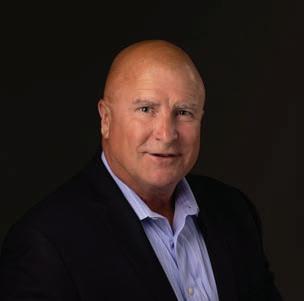
For many salespeople, the journey begins with trepidation. e prospect of rejection looms large, casting a shadow over their aspirations. e fear of failure can be paralyzing, preventing them from taking the rst step towards their goals.

It’s a natural response to an uncertain endeavor, but it’s also the crucible from which resilience is forged.
As salespeople muster the courage to engage with prospects, they often encounter another formidable adversary: the fear of prospecting. Cold calls, networking events, and asking for referrals can all evoke feelings of discomfort and anxiety. Yet, it’s through these interactions that salespeople re ne their pitch, hone their communication skills, and build the foundation for future success.
e key to overcoming fear lies in stepping outside one’s comfort zone. It’s a transformative moment when salespeople push past their self-imposed limitations and embrace the unknown. With each rejection comes a valuable lesson, each setback a steppingstone toward growth. rough perseverance
and determination, they begin to chart a new course towards success.
As salespeople gain con dence, they learn the importance of qualifying prospects e ectively. ey understand that not every lead is worth pursuing and that their time is a precious commodity. By identifying the characteristics of an ideal customer and focusing their e orts accordingly, they maximize their chances of success while minimizing wasted e ort.
Armed with a deep understanding of their product or service, salespeople embark on the next phase of their journey: presenting value. ey learn to articulate the bene ts of their o ering in a way that resonates with the needs and desires of their prospects. ey become storytellers, weaving narratives that captivate the imagination and compel action.
In the eyes of the prospect, value is often measured in terms of tangible outcomes. Salespeople must learn to quantify the bene ts of their offering in concrete terms, whether it’s cost savings, increased e cien-

cy, or improved performance. By demonstrating a clear return on investment, they instill con dence in their prospects and pave the way for future success.
With value established, salespeople move towards the critical moment of proposing. ey present their solution with con dence and conviction, addressing any lingering doubts or objections along the way. ey tailor their proposal to the unique needs of each prospect, ensuring that it aligns seamlessly with their goals and objectives. e culmination of the sales journey is the moment of truth: closing the deal. It’s a testament to the salesperson’s skill, persistence, and dedication. Whether it’s securing a signature on the dotted line or nalizing a handshake agreement, the act of closing represents the culmination of countless hours of e ort and preparation.
But the journey doesn’t end with the closing of a deal. For the savvy salesperson, it’s just the beginning.
There is so much to be proud of within the Douglas County School District (DCSD). We have incredible students, fantastic teachers and sta , and amazing parents/guardians and community members who all work together to make this school district one of the best!
Did you know?
For the rst time in a decade, Douglas County School District is the TOP scoring district in the Denver metro metro area!
DCSD is one of the only districts in the country to have met or exceeded our 2019 (pre-pandemic!) scores in every subject and every grade.
Bergeleen splits his time performing typical archival duties such as cataloging archival collections, preserving and digitizing items, and assisting in historical research as well as designing exhibits and coordinating the installation of artworks displayed throughout the county’s libraries.

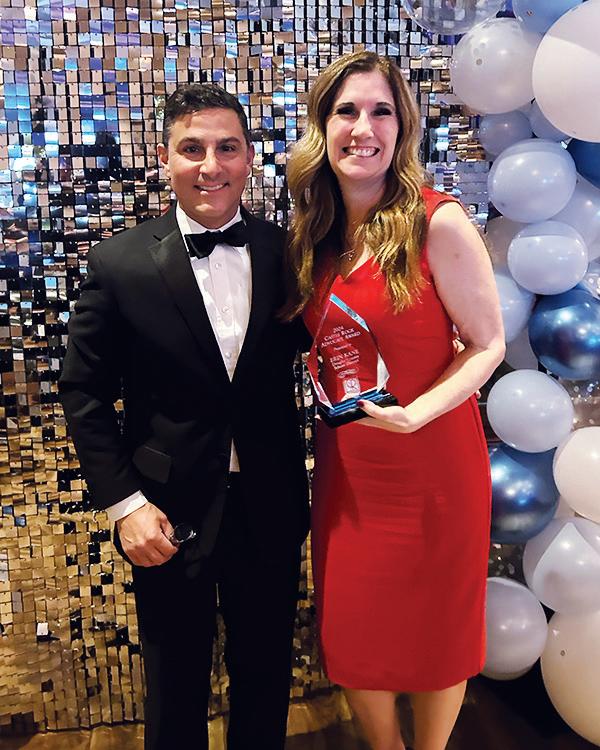
DCSD is one of the only school districts in the state to increase pro ciency levels across all student subgroups.
DCSD is one of
the leaders, nationwide, in “blurring the lines” between PK-12 and higher education through our incredible Concurrent Enrollment/ Career & Technical Education o erings (over 20K seats!) and our partnerships with multiple higher education institutions, providing students additional pathways to success after high
school, whether they choose college or go straight to industry.
Finally, DCSD was just rated number 11 on the list of the 250 “most envied” school districts in the country by Test Prep Insight (DCSD is the only Colorado school district in the top 65!).
We are so thankful, again, for the support we received to get 5A over the nish line. anks to 5A, we have been able to retain the amazing educators who made all of that happen for our kids and move our starting teacher pay from $45K to $51K. 5A resulted in a net increase of 2.939 mills to the district’s tax rate ($194 for a million dollar home), and yet we still have one of the lowest tax rates in the metro area, so the district’s return on investment for
our community is amazing.
Join the conversation at the State of DCSD Event
Come learn more about the current state of our school system, including our commitment to excellence, our shift back into the number one spot, our challenges, and our vision for the future.
ursday, May 2 6 p.m.
DCSD Legacy Campus, 10035 S. Peoria Street, Lone Tree RSVP: at bit.ly/StateofDCSD I truly am proud to be DCSD!
Erin Kane is the superintendent of the Douglas County School District.
SCDC monthly meetings typically are held at a location in Douglas County on the rst ursday of the month and each topic is of special interest to older adults and those who care for them. ere is no membership fee and attendees are offered opportunities to participate as
ey understand the importance of nurturing relationships, cultivating trust, and delivering on their promises. ey set a path for future business by staying engaged with their clients, providing ongoing support, and seeking opportunities for upselling and cross-selling.
e journey of a salesperson is one of continual growth, learning, and evolution. It’s a journey marked by triumphs and setbacks, fears, and triumphs. But through it all, one
volunteers in many di erent ways. Organizational representatives are welcome to attend and assist the
Future meeting topics include elder abuse and solutions, and mental health issues with an emphasis on older adults and youth. ere will not be a meeting in July.
e SCDC leadership team is planning a special half-day educational event in Castle Rock on Tuesday, Sept. 24. Save the date!
Seniors’ Council of Douglas County aims to educate, involve, and advocate for older adults. For additional information call 303-663-7681 or email dcseniorslife@douglas.com. us. Updates are available at www. douglas.co.us — search for Seniors’ Council. Our motto is Living & Aging Well!
thing remains constant: the unwavering determination to succeed. And as they navigate the cycles of fear, prospecting, value presentation, and closing, they emerge stronger, wiser, and more resilient than ever before.
I would love to hear the story of your sales evolution at gotonorton@ gmail.com and when we can grow from fear to con dence in our chosen profession, it really will be a better than good life.
Michael Norton is an author, a personal and professional coach, consultant, trainer, encourager and motivator of individuals and businesses, working with organizations and associations across multiple industries.
Minori Cecilia “Terry” (Naraki) Bouley
May 10, 1931 - April 15, 2024
Minori Cecilia eresa (Naraki) Bouley, “Terry,” passed away peacefully in her sleep at Creekside Senior Living in Bountiful, Utah, on April 15, 2024. She was born on May 10, 1931, in Fukuoka, Japan, to Yohachi & Asako (Abe) Naraki, the eldest of four.


Terry was a dedicated Air Force wife and mother, traveling with her husband, Wilfrid “Willie” Bouley, whom she married in 1954, and family throughout the world. She met Willie while working as a secretary at the Itazuke Air Base in Fukuoka, Japan during the Korean War. She was so proud when she became a Catholic and even more proud to become an American citizen. She enjoyed cheering her children and grandchildren on in whatever sport in which they chose to participate. She retired after a 20-year retail career with the Army and Air Force Exchange Service (AAFES). She was a great friend to many and always loved to greet and chat with new people.
Preceded in death by her husband, CMSgt Wilfrid Bouley, USAF; son, Lt Col omas Bouley, USAF; grandson, Eliot Bouley; and her parents. She is survived by children: Joe (Sara) of North Salt Lake, UT; Jeanne (Larry) Phenow of Maple Grove, MN; Ed (Lisa) of Granbury, TX; Charlie (Denise) of Parker, CO; Barb (Je ) Nichols of Portland, OR; and Toni ( omas) Bouley of San Antonio, TX; 21 grandchildren; 4 great grandchildren; sisters Noriko Endo & Hiroko Takeuchi & brother Iwao Naraki, all of Fukuoka, Japan. e family would like to thank the sta and residents of Creekside Senior Living, both assisted living and memory care, and also Ovation Hospice, for their friendship and tender care of Terry.
Funeral Mass was held at St Olaf Catholic Church in Bountiful, Utah. A celebration of life/memorial service and burial with Willie in Las Vegas, NV, will follow later.









Last week, our newsroom released the rst part of our two-week series “How Columbine changed us.” It looks back on the 25 years since the tragic shooting at Columbine High School, where two armed students took the lives of 13 people before ending their own. e narrative often repeated in the media focuses on the killers and victims, but, as we reported in week one, it overlooks Columbine’s journey of re-


covery, resilience and triumph. In week two, we touch on the issues of safety in “How Columbine changed response.” In the aftermath of Columbine, schools across the country have increased security measures. ese include classroom doors that lock from the inside, single-point entry systems, security cameras, metal detectors, scanners and drills. And, rst responders have changed how they communicate.


Our biggest nding is that the de ning aspect of Columbine is not the shooting, but the response of the community. It is the indomitable spirit that has emerged and evolved at the school and surrounding area since 1999. is spirit is evident in the school’s Day of Service, held every April 20, the anniversary of the shooting. As teacher Mandy Cooke, a survivor of the 1999 incident, puts it, “We have turned that day into some-







thing so positive… making sure that our current students know how to be better humans in the world, instead of this awful, tragic thing that happened to us.” us, inclusive school culture is perhaps the most critical way Columbine changed us.
View the whole project online at coloradocommunitymedia.com/ columbine-at-25.
– Michael de Yoanna and Kristen Fiore, editors

 BY HALEY LENA AND SUZIE GLASSMAN
BY HALEY LENA AND SUZIE GLASSMAN
Today, it’s common across the country for children as young as 4 and 5 to participate in active-shooter drills and shelter-in-place lockdowns about as often as they take standardized tests. at includes the Je erson County School District, where Columbine High School resides.
e Columbine of today has classroom doors that lock from the inside and a single-point entry for students, sta and visitors. It’s equipped with many visible and invisible ways to prevent and/or limit the impact of a mass-scale emergency, a kind that had not been on the national radar before the mass shooting.
While many people may believe school security is about physical barriers and policing threats, those working in the building today, including principal Scott Christy and social studies teachers Sam Bowersox and Je Garkow, say safety at Columbine is also about culture. As a result, the sum of those safety measures is far greater than the parts.
“Kids can’t learn if they don’t feel safe, and teachers can’t teach if they don’t feel safe. And so it’s everything. It’s incredibly important,” said Christy. “I think Columbine is the safest school in the world. My hope is that sta and students don’t think about what happened 25 years ago. ey see it as they see their school as a home, a place that they’re proud to be a part of, and a place that they know that they’re loved and cared for.”
Still, security has changed since the April 20, 1999 shooting.
John McDonald wasn’t at Columbine that day, but like countless others, his life was forever changed by the tragedy. Nine years later, he became the executive director of school safety for the Je erson County School District, including Columbine, and, since moving on, has continued to work to make schools safer.
“I hate to say good came out of it,”
said McDonald. “But what came out of (the Columbine shooting) was the commitment to protect kids.”
Before the tragedy, school o cials and security o cers focused on the potential dangers outsiders might in ict on their buildings. Overnight, they had to shift their thinking to consider that students could be threats, too, and how that might impact school safety plans.
Doing so took its toll. Between 1999 and 2008, the school district had multiple executive directors of school safety.
“ e job was di cult,” said McDonald, who held the position for 14 years starting in 2008. “It was overwhelming for people.”
McDonald, who is now the chief operating o cer for the National Council of School Security, was recognized internationally as the architect of the Columbine High School security and emergency management plan.
In April 1999, with no incident command structure in the district, school security consisted of a handful of cameras outside the school and a few school resource o cers. ere was a disconnect with local law enforcement agencies, who were unfamiliar with the insides of the school, critical information that would be useful for saving lives during an incident.
According to a 2018 Federal School Safety Commission report, there was a rush by leaders across the country to add security o cers and speed up response times, among other measures. Security experts also began considering how students, who often hear rsthand about planned attacks or suicidal ideations, might help tip them o . As a result, the Colorado Trust awarded a $375,000 grant to establish the anonymous 24/7 hotline Safe2Tell.
It’s di cult to know precisely how the immediate security changes impacted students. Walking into Columbine in August 1999, Kelley Kellogg said she didn’t focus on the
added security or the changes to the school other than being relieved that the library where the majority of the deaths occurred had been walled o .
Instead, she felt the typical nerves and excitement of any student on their rst day of high school. As a freshman, she hadn’t been there on the day of the shooting, but she knew several classmates who had, including one whose sibling had died.
“Mostly, we didn’t talk about it, even my friend who’d been directly impacted,” said Kellogg. “But I felt incredibly safe. Everyone was super vigilant and protective. Frank DeAngelis (the principal at the time) and all of the teachers took such good care of us, shielded us from the media attention and made us feel loved and cared for.”
A 2021 Students’ Reports of Safety and Security Measures Observed at School published by the National Center for Education Statistics indicated four measures became more prevalent in the ensuing years, from 2009 to 2019.
Students saw an increase in the use of one or more security cameras, a locked entrance or exit door during the day, student identi cation badges and security guards or assigned police o cers.
e sitting Je erson County School District Executive Director for the Department of School Safety, Je Pierson, said that in addition to more alarmed doors, secure classrooms, and vestibules to check identi cation, more information and security is coming with added cameras and security guards.
“I think it sends a message to our kids and our parents that we’ve got an additional set of eyes that are highly trained individuals watching out for and keeping an eye on what’s going on in our buildings,” said Pierson.
Six years ago, McDonald hired Pierson as the district’s director of safe school environments. In this role, he focused on enhancing part-


















Columbine High School Principal Scott Christy stands on April 4 outside the Frank DeAngelis Community Safety Center in Wheat Ridge. He spoke to reporters there as part of the Je co Public Schools “media day” in connection with the 25th anniversary of the Columbine shooting.
nerships between schools, district leadership, and the Department of School Safety, seeking to establish a more proactive approach.
Before taking on this role, Pierson was the principal at Standley Lake High School in Westminster and trained in federal and police safety and policing programs. Pierson said having rst responder training and the lens of an educator has helped him break down barriers to how schools should operate.
Far more than the enforced wearing of student IDs and the additional patrol cars posted outside, Kellogg said safety came from a sense of belonging.
“I feel like everyone just kind of tried to get along,” she said. “Because even though this really tragic thing happened, I felt like we were a part of a family. Kids are kids, and stu still happens, but I felt like everyone tried their best to take care of each other.”



After more than 25 years of build-out, Colorado’s Digital Trunked Radio System has made a di erence, first responders say
BY DEBORAH GRIGSBY DGRIGSBY@COLORADOCOMMUNITYMEDIA.COMIn the years before the shooting at Columbine High School, Colorado had already started to address challenges within its radio communications system for rst responders. Primarily directed at helping rural and mountainous towns mitigate dead spots in coverage, these e orts were a promising step forward, particularly during wild res, when aid spanned multiple jurisdictions.
But on April 20, 1999, when more than 40 separate agencies descended upon Columbine High School, communication broke down.
As police, re and medical personnel responded to the shootings that took 13 lives, radio frequencies overloaded because so many di erent agencies were all trying to talk at once.
At one point, radios had become so useless that messengers on foot had to relay critical information between agencies, as then-chief of the state Fire Safety Division Kevin Klein told e Denver Post in 2011.
“Go back to Columbine — di erent responding agencies on di erent radio systems that couldn’t talk to each other,” Klein told the Post. “You had paralysis in the initial phase of the incident. We had to use runners to go back and forth to talk about what we’re going to do.”

But a quarter of a century later, many rst responders say that challenges aside, the state’s Digital Trunked Radio System (DTRS) has made a di erence.
Experts describe DTRS as a “system of systems” that connects re, law enforcement, medical, military
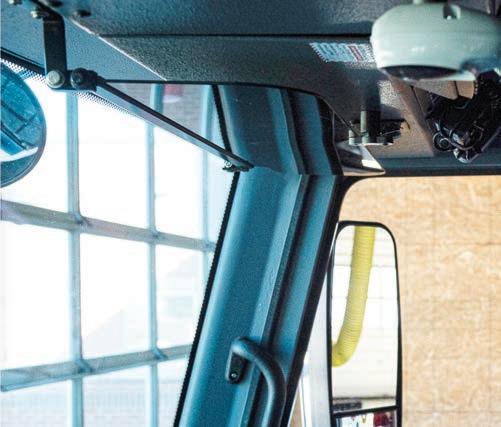
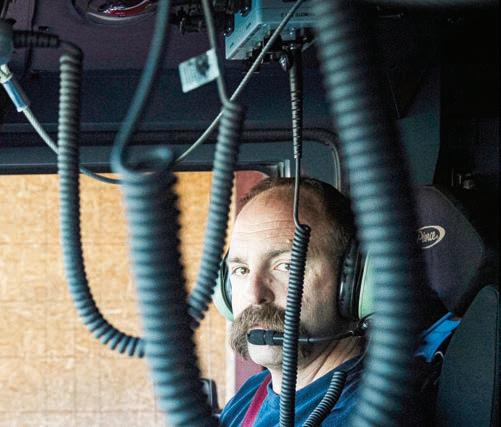





Colorado’s interoperable radio communication system for first responders has undergone continuous build-out over the past 25 years since Columbine. More commonly known as the digital trunked radio system (DTRS), this “system of systems” connects firefighters, law enforcement and other responders across a network of radios, both handheld and vehiclemounted. While it has seen its share of problems from inconsistent funding to technology glitches, Larkspur Fire Protection District Fire Capt. Chad Campagnola says he’s confident in the system and in its ability to perform in the event of a largescale emergency.
and federal assets with a network of radios, antennas and specialized software patches to bridge gaps between newer hardware and legacy equipment.
And even school districts can be part of the DTRS system.
“Any agency within the state can go to the system and connect with any other law enforcement or rst responder group that is on the scene of a critical incident,” Jacki Kelley, spokesperson for the Je erson County Sheri ’s O ce, said of the DTRS.
Fire Capt. Chad Campagnola said the Larkspur Fire Protection District has been a part of the state’s DTRS systems since Douglas County transitioned to it in the early 2000s.
Campagnola, who has been with the department since 1992 and styles himself as the “district radio guy,” said that although the DTRS system added more capabilities for his team, the early roll-out was not without frustrations.
As in most jurisdictions, Campagnola cites the standard funding and technology challenges as the most troublesome.
Not only is the radio expensive, but there are also fees for each radio to be on the system and for certain types of software upgrades.
However, with more than two decades of build-out complete, Campagnola says he’s con dent in the system and feels it has evolved into a dependable asset that can help save lives and protect property.

Prior to DTRS, Larkspur had often experienced radio communication di culties due to its local geography and terrain. ings are much better now.
“It’s de nitely an improvement from 24 years ago,” said Campagnola. “It’s also an improvement from two years ago. In our district speci cally, Douglas County has added more (radio) towers in the past ve years and that’s made an impact, especially for responders in the southern part of the county, as it a ects not just re but law enforcement, but roads and bridges, and the Douglas County School District — anyone operating within the DTRS coverage area.”


Nine months after the Columbine massacre, then-Gov. Bill Owens signed an executive order creating the Columbine Review Commission in response to public outcry for answers. e 10-member board, chaired by retired Colorado Supreme Court Justice William H. Erickson, was charged with identifying lessons learned and how those lessons could prevent future tragedies.
e Columbine Review Commission Report was released in May 2001, nearly a year and a half later.
Anger and accusations ensued in the days after the report’s release as parents, school o cials and others demanded answers, saying the 174page report completely “glossed over” the events that led up to the attack and failed to properly investigate police response.
e commission o ered its recommendations but made no requirements for mandatory implementation. e commission was disbanded after its report was released, further infuriating the public.
However, among the commission’s top recommendations was the need to improve communications and, as a byproduct, more coordination among emergency response agencies. It recommended continuing development of the Digital Trunk Radio System.
Speci cally, the Columbine Commission recommended that “agencies in parts of the state not yet within the statewide system receive funds for the purchase of TRP 100 or similar systems, enabling them to be available in the event of a serious catastrophe in any part of the state.”
While much has changed since 1999, improving the rst responder radio system has been di cult in the decades since. e challenge in building out — and sustaining — Colorado’s interoperable communication system seem to be consistent among agencies and falls
into three distinct buckets: funding, planning, and training.
Colorado amply followed up with heavy investment in the DTRS program.
Putting a nger on exactly how much has been invested in Colorado’s DTRS program year-to-date is complicated as multiple sources of funding have been and continue to be employed. A 2016 memo from the Colorado Legislative Council provides an insight into the program’s early nancial history, nearing $250 million at the time.
But piles of money aside, what most didn’t realize is that this project would be far more than just buying new radios and issuing them to rst responders.
Building a statewide interoperable radio system would include the construction of multiple antenna towers — some of them in hard-toget-to mountainous terrain — to bridge growing technology gaps between new and legacy systems. State technology experts would also have to identify and manage radio frequencies, as well as convince jurisdictions to collaborate and share resources.
Legislation to provide interoperable communication funding for schools
In 2011, more than 10 years after the mass shooting, then-Gov. John Hickenlooper signed into law Senate Bill 11-173. e bill addressed the lack of interoperable communications between schools and rst responders during an emergency. It augments the Colorado School Response Framework, created in 2008, to improve school crisis response by clarifying that interoperable communications are included in a school district’s school safety, readiness, and incident management plan.
Senate Bill 18-158 created the School Access for Emergency Response program, which provides schools with grant funding to purchase interoperable communication hardware and software, pay for equipment maintenance and provide training. e goal was to facilitate “seamless communications between existing school communications systems and rst








responder communications systems.”
e state placed the SAFER program within the Division of Homeland Security and Emergency Management and initially funded it with a $5 million transfer from the Department of Public Safety for the 2018-19 scal year. Subsequent years were funded by State Public School Fund transfers through July 1, 2023.
Colorado’s O ce of Information Technology currently oversees the state’s public safety communications network and the DTRS.
But even with millions in local, state and federal dollars invested in the DTRS program, completing — and sustaining — a statewide interoperable radio system still has a few bugs.
While most emergency management and public safety experts say the state’s system has improved dramatically and local governments are more organized and collaborative since the Columbine shooting, there is still work to do.


Other jurisdictions have a similar take.
e Je erson County Sheri ’s O ce — an early adopter of DTRS, joining Douglas County and Arapahoe County in the program in the late 1990s — was among the rst to arrive on the Columbine scene in 1999.
e agency understands, rsthand, what can go wrong when rst responders are unable to communicate. Brad Ingermann, a commander with the Je erson County Sheri ’s O ce Patrol Division, said that while the state’s DTRS still has its challenges, his agency is far better o than it was at the time of the Columbine shooting and now clearly believes it has an interoperable radio system that works.
“While large-scale incidents such as Columbine are far more common than they used to be, they are still very rare compared to events such as wildland res,” he said.



Every day Je rey Garkow frequents the halls of his alma mater. Garkow graduated from Columbine High School in 2006 and now works there as a social studies teacher.
He is one of the rst people to help reshape how the school honors the 13 lives taken on April 20, 1999.
Prior to 2017, the school wouldn’t hold classes on April 20.
“My experience with April 20 on the professional side of things was that it was just a day o ,” Garkow said. “I think that was hard for a lot of people, especially for the sta who were here on April 20, 1999.”
So, in 2016, Garkow said he and other Columbine educators decided to reimagine the day o and launched Day of Service.
“ is, I think, is kind of giving us the chance to control the narrative a little more about what Columbine has been through and what we are now,” he said.
e rst Day of Service was held in 2017. Garkow said about 400 students volunteered to participate. Last year around 1,500 of the school’s 1,700 students participated in the event.
Students, alumni, sta and community members participate in various projects on the Day of Service including volunteering at nursing homes, spending time at animal shelters, cleaning up parks, working with younger students in the district and cleaning up the campus.
In 2019, Gov. Jared Polis signed a proclamation declaring that Colorado will observe a Day of Service and Recommitment on April 20 each year.

Over the years, more alumni have gotten involved with the day and even planned their own versions of the event at other schools or their places of employment.
Frank DeAngelis, former Columbine principal, said people have participated in the Day of Service from beyond the state — even as far
away as Tanzania.
“It’s stu like that that I think is so important,” he said. “Because here’s the thing. ere are kids now that weren’t even born, but there’s certain messages — kindness, saying thank you … How do we make the world a better place?”
Mandy Cooke, a Columbine High School employee and survivor of the shooting, said the Day of Service reects the school’s current attitude of moving forward with hope.
“We have turned that day into something so positive,” she said. “And that is what I am most proud of — is making sure that our current students know how to be better humans in the world, instead of this awful, tragic thing that happened to us.”
For Garkow, the best aspect of Day of Service is the reactions from students who he says have loved participating in the celebration and carry that impact long after they graduate or leave.
“It’s just a really cool thing to hear students talk about that and how much of an impact that made on them and how much they continue to want to do that now,” Garkow said.
Garkow was in fth grade at Governor’s Ranch Elementary School on April 20, 1999. All he really remembers is learning the impact that day had on the community.
Sometimes students ask him about the shooting and Garkow said he is as open as possible with them and does his best to answer their questions.
“ ere is so much misinformation online and on social media or on ReddIt or in news articles about our school and the culture of our school that I think students pick up on,” Garkow said.
Garkow feels protective of his students. He feels they should not have to answer to people who are curious about the school.
“What responsibility do our kids have to own that story when they weren’t even alive during it?” Garkow said. “I think a lot of our kids
































have a di erent take on it now because they didn’t experience any of it.”
As a student himself, Garkow didn’t fully comprehend what had happened but did witness how tight-knit the community became.
“I came into the school already as a kid with a lot of pride in seeing what the community did after that and seeing how the community responded,” Garkow said.
He said DeAngelis became the center of that community in many ways.
“I think so much of why we are the community we are today is because of Frank,” Garkow said. “ at guy absolutely gave up everything for himself to take care of the community and made sure every kid felt valued and welcomed.”
Garkow said DeAngelis later hired him to teach at the school. He worked with DeAngelis for a few years before DeAngelis retired.
“I absolutely love being in the school,” Garkow said. “ ere’s 20plus alumni who I think work in the building and I think that speaks a

lot to the strength of the community (and) how much the school means to people.”
Garkow said the community of the school feels almost like a family.
“I think it’s rare to work in a place where so many of the people you were with are just dear friends,” Garkow said. “It’s pretty rare that I feel like I’m coming here just to work.”
Garkow works with a lot of his own former teachers.
“( ey) are mentors and friends and people who I hope I can model myself after as an educator just because they meant so much to me when I was a student here,” Garkow said.
Garkow said he hopes more stories about where the school is now are told rather than only re ecting on the past.
“ ere is so much tragedy but there have also been so many beautiful moments that’ve come out since, that I think it gives a much better picture of who we are now and where we are as a school,” Garkow said.




As Ingerman points out, wildland res can quickly spread across multiple jurisdictions and require a medley of rst responders and mutual aid partners — all arriving on the scene and many operating on di erent radio systems and channels.
DTRS helps solve this.
It does so by connecting rst responders by the use of pre-coordinated channels assigned to both day-to-day and emergency operations. Speci c talk groups are allocated based on responder function and assignments, freeing up channels and organizing incident information among multiple agencies and partners.
Hardware alone does not create interoperability
the purchase of equipment hardware: things like handheld radios, car radios, repeaters, antennas and tower systems.
Some experts in the eld recall “radio spending sprees” to purchase the 800-MHz radios — quickly spending grant money to avoid getting caught up in product shortages and back-order delays.
Fran Santagata, a retired U.S. Department of Homeland Security regulatory analyst and former Douglas County emergency manager, said the same was true for Colorado.

But interestingly, over the past 25 years, much of the federal dollars made available to states and local jurisdictions initially went toward
Evolving approach to safety and security
McDonald noted that school districts across Colorado struggled to create cohesive security plans until 2008, when state lawmakers passed a law creating the Colorado School Safety Resource Center “to assist schools in preventing, preparing for, responding to, and recovering from emergencies and crisis situations and to foster positive learning environments.”

“But equipment alone doesn’t create interoperability,” she said. “ ere is a speci c element of coordination and planning required, as well as training. Prociency and comfort in using the equipment are just as important.”
For most jurisdictions, Larkspur included, a signi cant portion of their daily radio tra c occurs over the DTRS, as designed.

emergency channels.
“I think the DTRS got built out, the towers have helped tremendously, and all of the training has helped, but I think we still struggle at every event with the lowest common denominator, which is the individual rst responder only being comfortable using the frequency they use day to day,” she said. “Almost every after-action report usually has a paragraph — or a chapter — on how communications broke down.”

But, as Santagata suggests, many rst responders tend to be more comfortable with their daily comms channels than they are with their
energy at Columbine is relaxed and playful. e school’s 1,668 students walk the halls with ease, chatting with friends and making their way to class.

Additionally, the Standard Response Protocol, created by the I Love You Guys Foundation, was released in 2009 and is now used by countless districts across states. e guidelines made a di erence for the school district because they were an “emergency prepared, not emergency scared program” that everyone understood.
Columbine today
On a bright Tuesday morning, mere days before spring break, the

“I think there’s de nitely truth to that,” said Campagnola. “Dealing with, like, a uni ed command with three agencies where we are, we are very comfortable with our primary work zone or operational zone.”
But Campagnola notes the solution to that is not just the responsibility of the individual radio user.
He said agency leadership also plays an important role in developing good muscle memory for users, looking at the bigger picture and developing relevant training exercises to reinforce those skills.

ey aren’t worried about potential threats or the possibility of something terrible happening. at’s because safety is baked into the very fabric of the school’s culture, and the students know it, explains Columbine SRO Eric Ebling.
Columbine is the only school in Je erson County with two SROs, Ebling and Dan Wonner, who have been there since 2017 and 2019. SRO Joella Gallegos works at one of the feeder middle schools and communicates constantly with Ebling and Wonner. Because of its storied past, Columbine also has more unarmed campus supervisors than others in the Je erson County School District.

recruits in the county’s law enforcement academy and continues with day-to-day use as the recruit enters the force, and with annual exercises that help reinforce radio competency.
“But we are a think-outside-ofthe-box agency,” said Jacki Kelley, spokesperson for the Je erson County Sheri ’s O ce. “We have an initial plan and a backup plan, but as you know, emergencies don’t always go the way you plan or the way you train.”

For the Je erson County Sheri ’s O ce, DTRS training for its personnel begins as early as with new
(Wonner) and me, the sheri ’s o ce or even campus security. If you’re on this property, your job is safety and security.”


But as communities continue to expand and population density increases, more funding will obviously be needed to support and maintain the state’s program.
Overall, most users seem to agree the DTRS system has made a di erence.
Is it perfect?
Not really.
“But I think it’s all good,” said Campagnola. “Like, I have no complaints about anything with our system. We’re continually improving it as a county and as a state, which is allowing for better interoperability.”

Pierson adds that “culture is one of the biggest mitigators.”
“If you have a culture that embeds safety, connections, knowing your student by name, strengths and needs and making sure they have a reporting mechanism for when they hear or see something, those things are easy to implement, and they’re free,” Pierson said.
Columbine sophomore Madison Price sees the school’s security measures but also feels safe because, like Kellogg, who graduated long before her, there’s a sense that everyone in the school is dedicated to taking care of them.


that gives feedback to legislators. Part of the culture is balancing the ne line between having too much of a physical environment that creates a prison-like mentality and keeping the physical presence there while maintaining a calm, inclusive and safe atmosphere.
“It has to be completely controlled internally,” said Pierson. “Which means student voices, teachers’ voices, parents’ voices, all those stakeholders have to be completely involved and not just involved but invested in what looks like a safe school environment.”

Yet, safety doesn’t come only from the number of o cers.
“It’s people. It’s communication, and it’s philosophy,” said Ebling. “It’s not mind-reading technology or drones. e only reason we can make this work every day is with the mindset that everyone’s job is safety and security. Security is not just Dan

“I do feel safe at school,” Price said. “ ere’s people here to protect us.”
Today, the district’s Department of School Safety, which has over 100 security sta working round the clock, continues to work directly with law enforcement and speak with other districts. It established a group of school safety administrators who meet once a month to discuss hot topics and are also part of a group

e measures in place at Columbine are “night and day from what the security measures were back then,” said Pierson. “But our job is to continue to stay up with the times and keep our buildings as safe as they can be.”
e Columbine tragedy forever changed school safety and security measures as we knew them. Yet, the one thing the massacre couldn’t change was the unbreakable spirit of the Columbine community, which continues to embody former principal DeAngelis’ rallying cry: “WE ARE COLUMBINE.”



Nearly 25 years after a mass shooting plunged Columbine High School into the national consciousness, a former principal and two current teachers sat down for interviews with news reporters ahead of the tragedy’s anniversary.
Media Day, organized by the Jefferson County School District as a way to shield teachers and students from a barrage of reporters, o ered them a chance to re ect on where journalists went wrong in covering the shooting.
One frustration that still sticks in their minds: News coverage can amplify rumors and misinformation, including the narrative that the two students committed the shooting because they were bullied.
“I think a lot of times, the narrative that was given was not accurate,” said Frank DeAngelis, who served as Columbine’s principal at the time. “And unfortunately, 25 years later, that narrative is still out there.”
In the years since the attack, few events have stopped America in its tracks like that day.
e intervening years have seen school gun incidents on the rise and, in turn, a rise in the frequency in which such events are covered in the news media. And while mass school shootings haven’t necessarily become more common, they’ve taken on a higher death toll.
e way that media covers traumatic events has been debated by readers, scholars and journalists alike, but a few lessons have become clear, as highlighted by those who study coverage of shootings and by those in the Columbine community like DeAngelis: Don’t make the shooters into legends. Don’t unwittingly inspire future killings. Don’t turn the tragedy into myth and misinformation.

University of Colorado Boulder professor Elizabeth Skewes, a media scholar, posits that people have
become desensitized to news of mass shootings, and survivors and those impacted indirectly have been retraumatized.
Unfettered access to news at America’s ngertips through smartphones “can make it so that when everything feels dramatic, nothing is dramatic,” Skewes said.
“Any mass shooting is awful,” she said. “Unfortunately, we have so many that they have become almost routine.”
Shooters in the years after the 1999 attack emulated the Columbine killers. University of Connecticut assistant professor Amanda Crawford said that is partly because reporters, whether they meant to or not, glori ed the killers. She said journalists should avoid that.
“You can’t underestimate the impact of that news coverage — of that media attention — on our larger ideas about mass shootings, about school shootings, about youth perpetrators, about this ongoing mass shooting crisis,” Crawford said.
Covering the Columbine shooting e Columbine attack remains a singular event in the canon of mass shootings in the United States, due to a number of factors: the advent of 24-hour news, police protocols of the time period and news coverage that sensationalized the shooters, Skewes said.
“Columbine was really the rst televised mass shooting,” Skewes said, adding: “I think a lot of journalists didn’t quite know what to do, even though there had been other mass shootings to some degree.”
Skewes added that the police protocol of the time was to assume criminals take hostages and wait, meaning that news outlets had time to mobilize to the scene but lacked concrete information — leading to rampant speculation.
“ is unfolded over hours,” Skewes said. “News organizations could be there to see it unfold and to photograph it as it unfolded too … ere was so much misinforma-
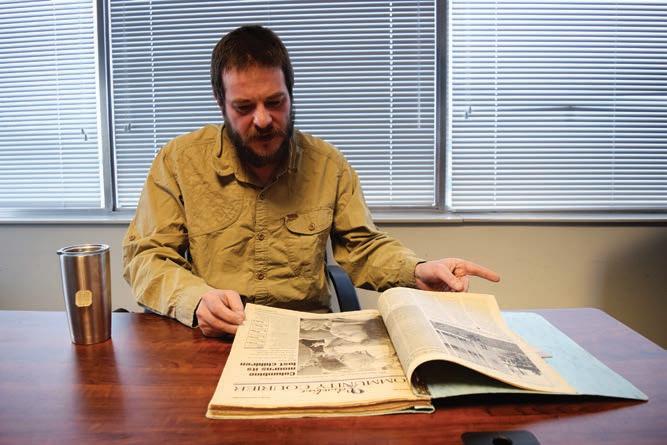


tion initially.”
John McDonald, formerly executive director of Je co School Security from 2008 to 2022, now the chief operating o cer for the Council on School Safety Leadership, said the rush to get information out led to the dissemination of faulty narratives, such as incorrect theories about the killer’s backgrounds, becoming widespread.
“ e other problem with Columbine is the facts and circumstances surrounding it and the narrative out of the media was so di erent from the truth because everybody was trying to make sense of the unimaginable,” he said.
Tom Fildey, who was a senior at Evergreen High School and a photojournalism intern at Evergreen Newspapers — which published the Columbine Courier, the area’s local paper, at the time — said that while he rushed to cover the attack, radio stations provided spotty information.
“I raced down the hill, listening to the radio the whole way,” said Fildey, who now works in the production department in our newsroom, which produces two dozen

metro area newspapers, including the Littleton Independent. “No information was really becoming available; every station you listened to was telling you something di erent. It was one person or two shooters, or many shooters and the body count was three, eight, whatever. Everything was all over the place.”
Graphic images circulated widely, while cell phones enabled a urry of calls to local stations from people promising information to journalists who needed to ll airtime and newspaper pages. at included callers who told TV news stations they were on campus as the incident unfolded, according to a case study by Alicia Shepard, who wrote for the American Journalism Review. One caller who had claimed to be a student at the school turned out to have called from Utah, where he was a 25-yearold snowboarder.
ings were reported “breathlessly” without being properly factchecked, Skewes said.
In the days and weeks following



the shooting, some of the coverage turned toward the shooters — the cover of Time magazine shortly after the massacre and the corresponding spread centered the perpetrators, not the victims.
“All of the focus was on the shooters,” Skewes said. And “then I think as the days unfolded, there was such an attempt to explain the actions of (the shooters) by who they were — they were goth, they were trench coats, they were this, they were that — and they were none of it.”

Mass shootings by the numbers
e history of modern mass school shootings in the U.S. stretches back at least to the 1966 University of Texas tower shooting, and a number of school shootings occurred in the 1990s before Columbine.
“But Columbine was really the incident that brought this phenomenon into the public consciousness,” Crawford said.

e portrayal of the shooters as victims of bullying, ampli ed by news coverage, may have helped inspire more killings. In his manifesto, the 2007 Virginia Tech shooter referred to the Columbine killers as martyrs.
“Shooters and attempted school shooters followed the Columbine model, so it created this social script,” said Crawford, the assistant journalism professor.
“Of the 12 documented school rampage shootings in the United States between Columbine in 1999 and the end of 2007, eight (66.7%) of the rampagers directly referred to Columbine,” Ralph Larkin of the City University of New York wrote in a 2009 study.

And the way news media covered the Columbine shooting likely fueled imitators.
“A lot of these shooters are trying to become famous. For instance, even with the Las Vegas shooter, the FBI found no motive for the shooting other than a quest for infamy,” Crawford said. “Why do they think mass shootings make you famous in the media? Because it made the Columbine gunmen famous in the media.”

And of the 11 rampage shootings outside the U.S. in that time, six had direct references to the Columbine shooting, the study says.
News outlets like the Rocky Mountain News and Washington Post wrote about bullying, or a culture of mistreatment, at Columbine as a motivation for the shooting. But mental health experts from an FBI summit focused on the conclusion that one of the shooters was a psychopath, according to Dave Cullen, who wrote the book “Columbine,” an examination of the shooting. DeAngelis, Columbine’s former principal, said he viewed the so-called “basement tapes” — home videos made by the shooters — and said they talked about being “superior.”
since Columbine, initial accounts of stories can still be wrong, or triggering.
“I think slower journalism is better journalism,” Skewes said. “I teach at CU and if I get an alert on my phone that says ‘Something is happening on campus, you need to lock down’ and I’m on campus, that’s helpful information because then I know it’s a safety issue.

U.S. school gun incidents have become more frequent in the past 25 years and are now at their highest recorded levels — and school mass shootings, although not necessarily increasing in frequency, have become more deadly, according to a March 2024 study in the journal Pediatrics.
An initiative called e Violence Project, with support from the U.S. Department of Justice, created a database of mass shootings from 1966 to 2019. Some main takeaways include:


“But if I get an alert on my phone that is about something at (another CU campus), I can’t do anything about it,” Skewes continued. “All I can do is worry and speculate.
Skewes said she would instead prefer well-vetted information about what happened that a reporter has taken their time to discern and fact-check.
She also discussed the impact that the Columbine shooting and the mass shootings that have occurred in the wake of it may have had in creating more such events.

• e database spanned more than 50 years, yet 20% of the 167 mass shootings in that period occurred in the last ve years.
• e death toll has risen sharply, particularly in the last decade. In the 1970s, mass shootings claimed an average of eight lives per year. From 2010 to 2019, the end of the study period, the average was up to 51 deaths per year.
Of mass shootings in the database, about 8% occurred at a K-12 school, with about 5% happening at a college or university.
which he thinks is “hugely positive.”
DeAngelis, who served as Columbine’s principal at the time of the shooting, is glad to see more caution in news coverage of tragedies.
“Media are saying ‘we can’t conrm this,’ and they’re waiting for information,” DeAngelis said.
Sam Bowersox-Daly, another current Columbine teacher, expressed concern that today’s media coverage of shootings often becomes tied to a political issue and what politicians are doing.

“ ere’s two things they talk about in the literature: One is the contagion e ect and the other is the copycat e ect,” Skewes said.
Skewes said the “contagion effect” is the noticeable increase in mass shootings in the wake of a prominent one — “a ripple e ect, if you will,” she said.
Copycat e ects typically refer to imitation of a person’s behavior, while contagion is based on the idea that behaviors can “go viral” and spread through society like diseases, according to an article in the journal American Behavioral Scientist.


“Focusing on Washington after it happens, does that take away from — these are still people,” Bowersox-Daly said.
Garkow remembers the fth anniversary of the shooting, when MTV News reporters o ered to pay for Qdoba burritos if students would do an interview, he said.
“ e media was chasing kids around, like trying to corner us at lunch,” Garkow said.

DeAngelis and Christy, the current principal, both sighed with relief when asked whether Media Day helps them. DeAngelis said the phone used to ring o the hook, especially during the 20th anniversary. is year, he’d only received one call from a national reporter as of Media Day. For Christy, it’s helpful for keeping reporters away from the campus and preventing them from interrupting the school day.

“ e reality is that lots of people are bullied who don’t commit a mass murder, so that’s not a real answer as to why the shooting happened, right?” Crawford said.

The impact of covering mass shootings e advent of smartphones has made it so that large numbers of people are noti ed when a mass shooting happens — whether it directly impacts them or not. But the rushed-out, breaking stories aren’t always the best versions of the stories. And, though news organizations have learned lessons
McDonald said the fascination with the Columbine shooting still follows the school around, 25 years later.
“Every media story about a school shooting is a Columbinestyle shooting,” McDonald said. “So, we have struggled for years to try and get o the radar and it’s a big lift. ey still come from around the world, they want to come to the school, it’s a place of fascination for people and all we want to do is educate kids.”


At Media Day by the Je erson County School District in early April, Je Garkow, a Columbine social studies teacher who was a student at the school from 2002 to 2006, said it seems like there’s less emphasis on perpetrators in media coverage of school shootings now,
‘A time for extreme sensitivity’
“Back then, it wasn’t the same as it is now,” Fildey said. “I think (journalists) bring a lot more empathy to our work (now).”
Fildey recalled being at a memorial service shortly after the massacre when a group of about 12 survivors huddled together in a moment of solidarity. In the center of the circle, a photographer lay on the ground, wide angle lens pointing up at traumatized teens.


“Great photo,” Fildey said. “But man, that’s kind of an invasion.”
Skewes is working with University of Dayton Professor Katie Alaimo on a book about media coverage of mass shootings, and said she was prompted to do so after the 2012 Aurora theater shooting.
In the immediate aftermath of that shooting, Skewes turned on the local news and saw an anchor


say that out of respect for the families of the victims and survivors, the network would not talk about the shooter unless there was some major court case and development
that necessitated coverage.
“I was caught by that in the sense that I thought it made perfect sense in many ways,” Skewes said. “And then I kind of thought, ‘Well, except that if we can’t talk about the shooter, we can’t talk about the systemic failures that occurred and what prevented people from reporting concerns that they had.’”




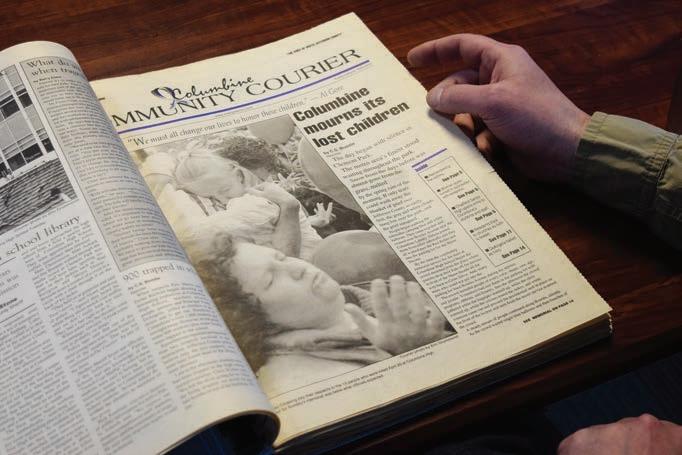
Journalists may not want to entirely avoid a shooter’s name since it can provide a reference point for researchers and historians in the future, Crawford said.
“As someone who studies misinformation, I also recognize that
if the media failed to ever identify a shooter, that could feed the inevitable conspiracy theories about these tragedies even more,” Crawford said.
But “most of the stories should not include the shooter’s name, and there is no reason to use the name repeatedly in a story,” said Crawford, who thinks the news media has gotten better about not focusing on the killers.
Despite some improvement, the media still shows up and “inundates a town” after a mass shooting, as it did covering the Columbine tragedy, Crawford said.

She advises against “endless hours of news coverage, even when there is almost no confirmed facts or new information to share. That kind of coverage serves no one and just extends the trauma of the event.”




Skewes recommends giving the families of victims time in the aftermath of shootings but keeping them in the loop about a news outlet’s future plans for coverage.
“In the immediate aftermath, or coming up on an anniversary of a shooting, is a time for extreme sensitivity,” Skewes said. “Beyond that, when you need to do these kinds of stories (about the shooter), reach out to victims’ advocacy organizations and say ‘We’re going to do this, do you want to be a part of the story?’ And if not, that’s OK.
“But we want to let you know we’re doing it so that when you see it when it comes out, you’re not surprised and you’re not caught off guard,” Skewes continued. “Give them as much of a heads up if you can, because I think there’s kind of a gut punch to picking up a paper and finding your life in it again, or seeing something on the news.”


Gov. Jared Polis addressed the audience at the Mitsubishi Electric Trane HVAC Training Center 2250 Airport Blvd Unit 600, Aurora about the New calculator tool. The project was a collaboration with Google. org, Rewiring America and the state of Colorado.
Gov. Jared Polis recently announced a collaboration with Google.org and the nonpro t Rewiring America. ey launched a tool to help Coloradans calculate their energy savings, the Colorado Energy E ciency Upgrade Savings Calculator. e tool is funded by a $5 million grant from Google.org.
“With this new tool, Coloradans can easily access discounts on heat pumps, electric vehicles, solar power and more. ese clean energy upgrades save Coloradans money, potentially thousands of dollars, and will help Colorado achieve our climate goals to help future generations,” said Gov. Polis.
e calculator was created to help families calculate their savings from upgrading to a more energy-ecient lifestyle. ose savings come from the many incentives and credits available from federal, state and local sources, according to the governor’s press release announcing the project.
“Tens of thousands of dollars in local, state, utility, and federal incentives make these zero-emission technologies more a ordable and accessible,” said Colorado Energy O ce Executive Director Will Toor. “ is easy-to-use tool will help Coloradans maximize these incentives to pay the lowest possible cost for home energy upgrades, which reduce pollution and save them money on utility costs.”
e calculator was the brainchild of the nonpro t Rewiring America and the Google.org Fellows. Rewiring America is an organization that
promotes electrifying communities. According to the governor’s announcement, the Google.org Fellows are a team of engineers, program managers, and other IT experts who work on pro bono projects.
“Collaborating with Rewiring America enabled our Google.org Fellows to support the creation of a cross-country impact by helping American households take advantage of these new electri cation incentives,” said Bhavna Chhabra, senior director of software engineering and Google’s Boulder o ce lead. “It’s a great example of how advanced technology, like AI, can be leveraged in a bold and responsible way. As a Coloradan, I’m proud that our state is leading on climate solutions at the household level.”
e savings calculator also has language translation capabilities and is designed to be easy to operate. e collaborators hope that the tool helps households reduce their climate impact without economic compromises.
“We’re thrilled to launch this new tool in a state that is truly leading the way on residential electri cation, thanks to Gov. Polis’ leadership and the e ort of so many advocates,” said Ari Matusiak, CEO of Rewiring America. “We look forward to continuing to work in partnership to make these important home upgrades more a ordable and accessible to all. With this calculator, households in Colorado are only a few clicks away from the next steps on their electri cation journey.”
To access the calculator, go to https://homes.rewiringamerica. org/calculator.




















Bill Knox, 93, grew up in the Vollmar neighborhood in Weld County, just northwest of Fort Lupton.
Knox said his parents had a ranch there, and he went to school with kids who lived in Vollmar and its surrounding areas. ey all went to the little Vollmar schoolhouse, which has since been converted into a home, he said.
One thing that always caught his eye was the little cemetery there, the St. Francis Vollmar cemetery. Still living in the area, Knox still thinks about it and visits it often. His goal now, before he passes, is to help save and preserve this historic cemetery.
“Every time I’d go by it, it bothered me that most of these tombstones are covered with sand up to three feet deep,” Knox said. “I would like to clean that somehow up before I pass away.”
e cemetery is an acre and a quarter with about 35 to 40 people buried there. He said he started to look in on the cemetery ve years ago but started to research it two years ago. It’s set between Weld Country Roads 21 and 23 west of Fort Lupton. Information about the plot is hard to come by, he said.


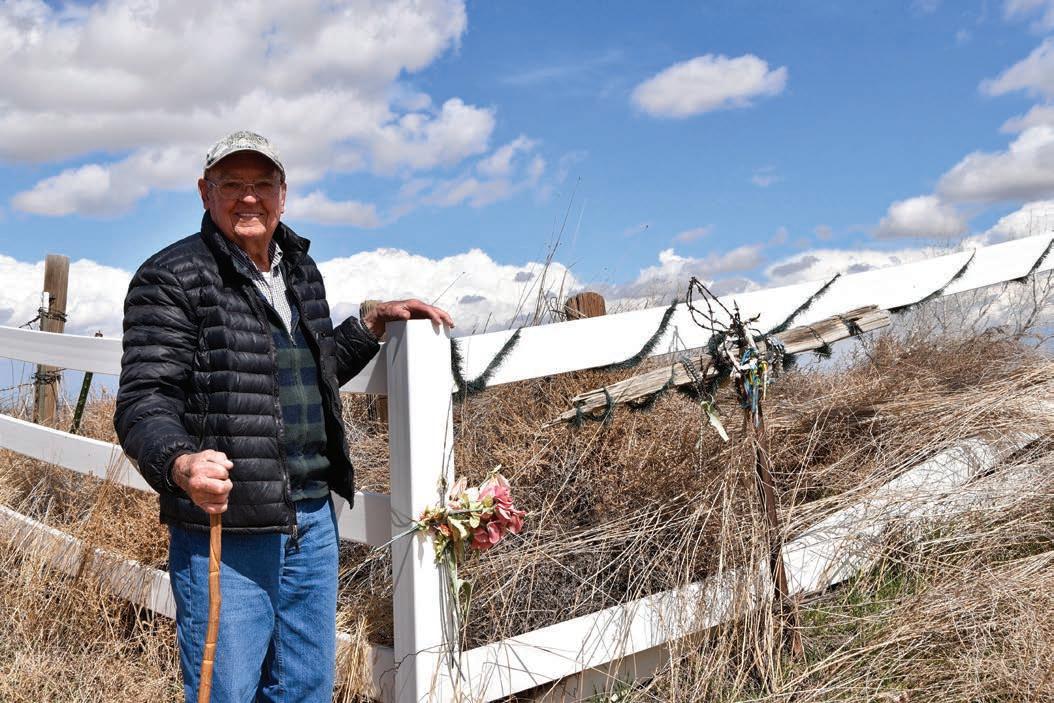
“I looked up the deed at the Weld County Assessor’s o ce. e last time it was deeded was in 1926, and the St. Francis Vollmar Association ran it. I traced it back; it may have been null and void in the 1940s,” Knox said.
Knox has since taken over the deed and the association name at the cemetery.
He’s now looking for people who grew up in the neighborhood – or the descendants of those that did. He asks that anyone who knows about the cemetery and who might have relatives buried or simply someone who has the resources to help him preserve it, to call at 970-372-0759.
“It’s just a shame that the cemetery is neglected,” Knox said.
Long neglected
It’s always been a tough plot, he said. He remembers growing up during the Depression.
“During the Depression, the sand storms practically covered the old cemetery there,” Knox said.
Knox said the cemetery contains




100% Spanish buried plots, and it should be dedicated to uncovering and preserving that history.
“It was all the Spanish people that lived in Vollmar,” Knox said.
e people buried there, he gures, are the ones who helped the community grow by laboring in the sugar beet factory, cleaning beets. e area was a huge supplier to Great Western Sugar’s factory in Brighton. And although the factory remained in operation until 1977, he thinks Vollmar’s association ended in the late 1940s.
Knox said he called many people, including Weld County Genealogy, but has yet to learn about the cemetery. Getting information about the plot has been a challenge.
“ e records for the cemetery were in the Londeen Mortuary in Fort Lupton, but it burned down years ago, and all records burnt with it,” he said. “ ey buried most of the people.”
Knox also called the Archdiocese Catholic Church in Denver to see if they had a record of the cemetery, but representatives there said it didn’t belong to them.
Dr. Holly Kathryn Norton, Director of the O ce of Archaeology & Historic Preservation, State Archaeolo-


gist, and deputy State Historic Preservation O cer at History Colorado, said they did not have a record of the cemetery in their database, nor was it listed on popular sites such as Grave Finder.
She lives nearby and plans to visit it and see what she can learn.
“ is cemetery is only 30 minutes from my house, so I’ll make a point to get out there and record it, as well as see if we can locate any additional information on it and contact Mr. Knox,” Dr. Norton said.
Patricia Carmody with the Colorado Historic Cemetery Association, which provides resources to preserve and protect historic Colorado cemeteries, said Mr. Knox must map and record the graveyard before touching and cleaning it.
“On our site, we list several resources and books on how to preserve cemeteries,” said Carmody.

















After last month’s near-record snowstorm, I know I am not alone when I say that I am ready to get outside and play, get my hands in the dirt and enjoy the sunshine and warmth that comes each spring. As the water efficiency coordinator for Centennial Water and Sanitation District, and a horticulturist at heart, this is my March Madness. Planning and preparation throughout the year converge each spring as customer inquiries pour in approaching the summer irrigation season.
Working alongside the team at Centennial Water, we are keeping our target set on the long-term goal: ensuring a sustainable water supply for the future. Even with the above-average snowpack and full reservoirs, our dedication to water conservation remains unwavering. Identifying opportunities to curtail water consumption is as important as ever. Rebate programs and educational opportunities are a pivotal aspect of this long-term strategy.
This year we are launching a new water wise award, three new rebate programs, and we will be hosting four conservation events


throughout the year. There is a lot to be excited about and we are eager to work with customers to help you start saving water and get rewarded for the great work you are already doing.

The new Water Wise Landscape Award will recognize customers who are championing low-water landscapes. Customers can nominate themselves or a neighbor and three winners will be selected based on water-efficient practices in their yard. The winners will receive a $100 credit on their water bill. Do you have a beautiful ColoradoScape? Have you mastered the art of cycle and soak? Do you have a pollinator garden to brag about? You could be the first recipient of our Water Wise Landscape Award. Look for details on how to nominate a yard on our website at centennialwater.org.
One of Centennial Water’s new offerings this year is a soil test
rebate. All life begins in the soil. A strong root system is essential for drought resilience, which requires healthy soil. A soil test guides fertilizer and soil amendment decisions and can reduce unnecessary fertilizer applications that could adversely affect our water supply. Opting for phosphorous-free fertilizers further safeguards our waterways.
The second new rebate targets customers who convert overhead spray irrigation to drip irrigation. Drip irrigation stands out as the most efficient and waterconserving method for perennials, shrubs and trees. For those contemplating turf replacement, pairing drip irrigation with your new ColoradoScape is a great way to get rewarded for your approach to smart water management.
Our third conservation incentive is for landscape professionals. We are offering financial assistance to green industry professionals seeking to expand their knowledge of water-efficient irrigation and sustainable landscape practices. We will reimburse individuals for a variety of industry certifications. If you are inter-
ested or know a landscaper who may benefit from financial aid, have them contact me at pmcfarland@highlandsranch.org.
Lastly, I invite you to attend one of our conservation events this year. Come learn, ask questions, and hopefully walk away a little water wiser. All events are free and will be held at Max Taps in Highlands Ranch. Registration is required.
June 3 - Peaks to Pints: The journey of water from the Colorado mountains to your tap.
Aug. 15 - Thirsty Thursday: Quench your thirst for conservation. Learn how you can save water in and around your home. October date TBD.
We have a lot going on when it comes to conservation. Visit our website (centennialwater. org), subscribe to our eNewsletter (email info@centennialwater.org), or attend an upcoming event. If you have questions, please don’t hesitate to contact me at pmcfarland@highlandsranch.org.
This column is written by Paige McFarland, water efficiency coordinator for Centennial Water and Sanitation District.



















Saturday Sep. 21st at DCSD Legacy Campus 10035 S Peoria St, Lone Tree and
Saturday Oct. 5th at The Arvada Center 6901 Wadsworth Blvd, Arvada















Calling all health and wellness vendors! Elevate your brand and join our event as a sponsor. Connect with our healthconscious community and showcase your products/services to a motivated audience ready to prioritize their wellbeing. Don't miss this opportunity to be part of a transformative experience! www.coloradocommunitymedia.com 303.566.4115 events@coloradocommunitymedia.com
UCHealth patients with mobility impairments due to a neurological diagnosis are now able to try the rst FDA-cleared bionic piece of clothing, the CIONIC Neural Sleeve created by CIONIC neurotech company, which helps facilitate walking and moving the legs.
e CIONIC Neural Sleeve – recognized by TIME Best Inventions, the Digital Hub Awards and more – enables those with mobility impairments, such as from multiple sclerosis, cerebral palsy, spinal cord injuries, or strokes, to move with more comfort.
Dr. Enrique Alvarez, assistant medical director of neurology at UCHealth University of Colorado,
said devices such as the sleeve are used to help people stay active.
e CIONIC Centers for Excellence allows UCHealth patients to get a sense for the device with physical therapists who have been trained with the equipment. While it’s currently available at the Anschutz campus, depending on the interest, Alvarez said the idea is to expand the device to locations such as Highlands Ranch.
Inspired by his daughter’s mobility impairment, CIONIC Founder and CEO Jeremiah Robison wanted to explore what technology could do for similar patients.
“Our goal was to take technologies that were e ective for my daughter’s mobility in a clinical setting and integrate them into clothing that would extend those bene ts to her


The
everyday life,” said Robison. “Wearable medical devices that power coordinated care across clinical settings at home and on the go are the future of healthcare.”
UCHealth University of Colorado, along with Craig Hospital and Neuro Physical erapy, are the rst in Colorado to join the CIONIC Centers for Excellence network, which provides neurological medical centers, like UCHealth, with exclusive training and access to the sleeve in the clinical care of patients.
When it comes to treatment for an autoimmune disease like multiple sclerosis, doctors tend to focus on comprehensive care, Alvarez said.
“Because there’s a lot of facets that kind of go on with the disease,” said Alvarez, who is also an associate of neuroimmunology at the University of Colorado School of Medicine and is the vice chair of clinical research for the department.
While there are various modifying therapies, which include certain drugs, when the disease hits the progressive stage, it’s harder to slow down. When damage accumulates, Alvarez said the focus turns to symptom management.
In addition to ensuring the patient’s pain is under control, management also involves getting enough sleep, monitoring their spasms and mobility.
“What’s very clear is that staying active is probably the best medicine


we have for that stage of the disease or after an attack,” said Alvarez.
When one of Alvarez’s patients came in wearing the sleeve last year, he became intrigued.
e sleeve delivers Functional Electrical Stimulation to activate muscles in the leg and improve walking in real-time. It uses algorithms to sense and analyze a person’s movement and the sleeve uses sensors to measure the ring patterns of individual muscles and the resultant position of the leg during movement.
“When you have patients that have these disabilities, part of the issue is sometimes there’s some weakness and they [the sleeves] work by trying to sense when you’re about to take a step and then can zap the nerve that goes to the muscles to kind of activate those muscles,” Alvarez said.
Another aspect that stood out for Alvarez was the ability for patients to adjust the device in order to stimulate muscles in di erent parts of the leg.
Since the CIONIC demo, Alvarez has joined the tech company’s scienti c advisory board and has had patients nd the product helpful.
“ e part I liked about it is it collects information as much as it helps with walking,” said Alvarez. “So trying to kind of gure out what we can learn from it, can we start to measure certain things that we can’t measure right now?”








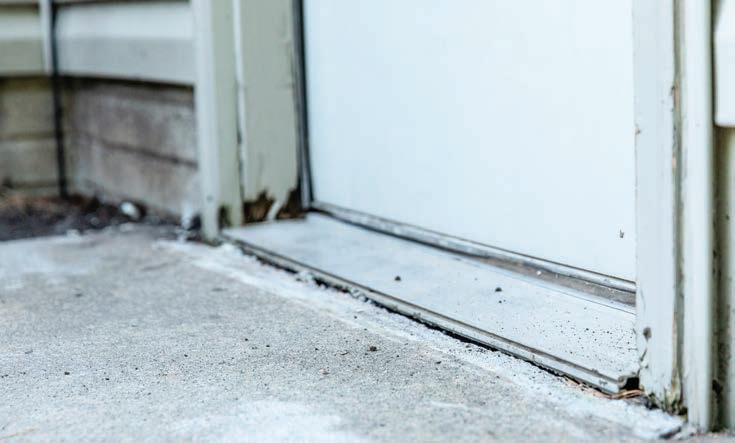






Help Wanted
School Psychologist or Intern
Full-Time School Psychologist or Intern to join our dynamic, multi-disciplinary team of professionals for the 202324 school year - School Districts East of Limon Area
Requirements: Educational Specialist (Ed.S.), Colorado certified. Provide PreK12 intervention including assessment, development of IEP’s & consultation services. Competitive salaries: ED.S $57,800$66,200 & Intern $53,590$59,550, both commensurate upon experience. Excellent benefits including dental, vision, and medical insurance. Flexible scheduling with the opportunity to complete some work at home. May also be eligible for loan forgiveness. Flexible schedule. Use of a car or mileage reimbursement.
Questions contact Tracy (719) 775-2342, ext. 101. To apply for this position, please visit our website ecboces. org and click on the “Jobs” page, click on the job you are interested in & then click on the green button “Apply Online”, located at the bottom of the job listing. EOE
Software Dev Engr II
CSG Systems Inc. d/b/a CSG has an opening for Software Dev Engr II in Englewood, CO to research and develop computer software. Telecommuting is permitted 100%. Position reports to company HQ in Englewood, CO. Position requires a Master’s degree or Bachelor’s degree in Computer Science or related field. $108,992.00 to $118,992.00 per year, including standard company benefits. Send resume to USIRecruitment@csgi. com. Must reference job 21890.11.1
Special Education Teacher
For a significant needs program located at the Strasburg School District for 2024-25 School Year. Current Colorado Special Education Teacher license required.
BA salary range $41,000$47,300 & MA salary range $46,250-$52,550, based on experience. Excellent benefits. including full health benefits! Collaborative work environment with lots of free continuing education opportunities available. May be eligible for Student Loan Forgiveness. Questions contact Tracy at (719) 7752342, ext. 101 or tracyg@ ecboces.org. To apply for this position, please visit our website ecboces.org and click on the “Jobs” page, click on the job you are interested in & then click on the green button “Apply Online” at the bottom of the job listing. EOE
Senior Software Development Engineer
CSG Systems Inc. d/b/a
CSG has an opening for Senior Software Development Engineer in Englewood, CO to lead the design, analysis, creation, and debugging of CSG's customer facing applications. Position allows for remote work and reports to company headquarters in Englewood, CO. Requires a Master’s or Bachelor’s in Computer Science, Information Technology, or related field. $152,069.00 to $162,069.00 per year, including standard company benefits. Send resume to USIRecruitment@csgi.com. Must reference job
21890.15.3.
Senior Software
Development Engineer
CSG Systems Inc. d/b/a
CSG has an opening for Senior Software Development Engineer in Englewood, CO to research, design, and develop computer software. Telecommuting is permitted 100%. Position reports to company HQ in Englewood, CO. Requires a Master’s degree or Bachelor’s degree in Computer Science, or related field. $152,069.00 to $162,069.00 per year, including standard company benefits. Send resume to USIRecruitment@csgi.com.
Must reference job
21890.77.2
Senior
CSG Systems Inc. d/b/a
CSG has an opening for Operational Engineer Senior in Englewood, CO to research, design, and develop computer software. Position allows for 100% telecommuting. Position reports to company HQ in Englewood, CO. Position requires a Bachelor’s degree in Computer Engineering, Computer Programming, Information Technology, or related field. $152,069.00 to $162,069.00 per year, including standard company benefits. Send resume to USIRecruitment@csgi.com.
Must reference job 21890.68.2
Teacher of the Deaf and Hard of Hearing
East Central BOCES is seeking a Part-Time 3 day a week Teacher of the Deaf and Hard of Hearing for the 2024-2025 school year. Salary Range- $27,750$32,790 for 112 days dependent on experiences and education. Hold or be able to attain a Colorado Teaching License with an endorsement as a Special Education Specialist- Deaf/ Hard of Hearing required. Complete assessments, attend IEP meetings, provide direct and indirect special education services. Excellent benefits including access to a company vehicle or mileage reimbursement and fully paid health insurance, including vision and dental. May be eligible for loan forgiveness program. Flexible scheduling with the opportunity to complete some work from home. To apply for this position, please visit our website ecboces.org and click on the “Jobs” page, click on the job you are interested in & then click on the green button “Apply Online”, located at the bottom of the job listing. Questions contact Tracy at (719) 775-2342, ext. 101.
EOE
Test Engr Sr.
CSG Systems Inc. d/b/a CSG has an opening for Test Engr Sr in Englewood, CO to develop and maintain automated tests.
Telecommuting is permitted 100%. Position reports to company HQ in Englewood, CO. Requires a Bachelor’s degree in Computer Science, Information Technology and Computing, or a related field. $128,398.00 to $138,398.00 per year, including standard company benefits. To apply, send resume to USIRecruitment@csgi.com.
Must reference job
21890.75.3.


Help Wanted
Software Development Engineer Sr.
CSG Systems Inc. d/b/a
CSG has an opening for Software Development
Engineer, Sr. in Englewood, CO to research, design, and develop computer and network software or specialized utility programs. Telecommuting is permitted 100%. Position reports to company headquarters in Englewood, CO. Requires a Bachelor’s degree in Computer Science, Systems Engineering, or a related field. $119,667.41 to $129,667.41 per year, including standard company benefits. Send resume to USIRecruitment@csgi.com.
Must reference job
21890.70.3.
Help Wanted
Speech-Language Pathologist
Remote or in person FT or part time Speech-Language Pathologist or SLPA Positions
Available for the 20242025 school year. Open to School Internships. No Contract Agencies. Able to provide supervision for CFY hours. Join our dynamic, multi-disciplinary team of professionals for the 202425 school year. Complete assessments, attend IEP meetings, provide direct services and indirect services for students in PreK-12th grades. Competitive salaries: SLP - $50,450-$56,050 & SLPA- BA $41,000- $46,600 based on 186 day contract. Salaries given are based on a full-year contract. Salary commensurate upon experience. May also be eligible for loan forgiveness! Excellent benefits, including full health benefits & mileage reimbursement. For in person providers there is flexible scheduling with the opportunity to complete some work at home.
Questions contact Tracy at (719) 775-2342, ext. 101.
To apply for this position, please visit our website ecboces.org and click on the “Jobs” page, click on the job you are interested in & then click on the green button “Apply Online”, located at the bottom of the job listing. EOE
Operational Engineer II
CSG Systems Inc. d/b/a
CSG has an opening for Operational Engineer II in Englewood, CO to participate on DevOps Engineering team within Scrum environment. Telecommuting is permitted 100%. Position reports directly to company HQ in Englewood, CO.
Requires a Bachelor’s degree in Computer Science, or related field. $130,520.00 to $140,520.00 per year, including standard company benefits. Send resume to USIRecruitment@csgi.com.
Must reference job 21890.8.1
Misc. Notices
WIDOWED MEN AND WOMEN OF AMERICA.
A social club offering many exciting activities and life long friendships. Social hours for all areas of Metro Denver. Visit
Widowedamerica.org for details In your area!
Garage and Estate Sales
Garage Sales
100+ HOMES
CHERRY KNOLLS, THE KNOLLS & TIFFANY
NEIGHBORHOODS
Fri. & Sat. May 3 & 4
S. Colorado Blvd & E. Dry Creek Rd. 80122
SAVE THE DATE!!!!
Merchandise Firewood
Medical
Attention oxygen therapy users! Discover oxygen therapy that moves with you with Inogen Portable Oxygen Concentrators. Free information kit. 1-866-4779045
Don’t let the stairs limit your mobility! Discover the ideal solution for anyone who struggles on the stairs, is concerned about a fall or wants to regain access to their entire home. Call AmeriGlide today! 1-833399-3595
Eliminate gutter cleaning forever! LeafFilter, the most advanced debris-blocking gutter protection. Schedule free LeafFilter estimate today. 20% off Entire Purchase. 10% Senior & Military Discounts. Call 1-833-610-1936
MobileHelp America’s premier mobile medical alert system. Whether you’re home or away. For safety & peace of mind. No long term contracts! Free brochure! Call 1-888489-3936
Become a published author. We want to read your book! Dorrance Publishing trusted since 1920. Consultation, production, promotion & distribution. Call for free author`s guide 1-877-729-4998 or visit dorranceinfo.com/ads
Prepare for power outages today with a Generac Home Standby Generator. Act now to receive a FREE 7-Year warranty with qualifying purchase* Call 1-855-9486176 today to schedule a free quote. It’s not just a generator. It’s a power move.




Split & Delivered $450 a cord Stacking $50 Call 303-647-2475 or 720-323-2173
Lawn & Garden
Professional lawn service: Fertilization, weed control, seeding, aeration & mosquito control. Call now for a free quote. Ask about our first application special! 1-833606-6777
Health & Beauty
VIAGRA and CIALIS USERS!
50 Generic Pills SPECIAL $99.00
100% guaranteed. 24/7 CALL NOW! 888-445-5928
Hablamos Espanol
Dental insurance from Physicians Mutual Insurance Company. Coverage for 400+ procedures. Real dental insurance - not just a discount plan. Get your free Information Kit with details! 1-855-526-1060 www.dental50plus.com/ads #6258
Water damage cleanup: A small amount of water can cause major damage to your home. Our trusted professionals dry out wet areas & repair to protect your family & your home value! Call 24/7: 1-888-872-2809. Have zip code!
Wesley Financial Group, LLC
Timeshare Cancellation Experts Over $50,000,000 in timeshare debt & fees cancelled in 2019. Get free info package & learn how to get rid of your timeshare! Free consultations. Over 450 positive reviews. Call 833-308-1971
Replace your roof w/the best looking & longest lasting material steel from Erie Metal Roofs! 3 styles & multiple colors available. Guaranteed to last a lifetime! Limited Time Offer up to 50% off install + Additional 10% off install (military, health & 1st responders.) 1-833-370-1234
Diagnosed with lung cancer & 65+?
You may qualify for a substantial cash award. No obligation! We’ve recovered millions.
Let us help! Call 24/7 1-877-707-5707
Bath & shower updates in as little as 1 day! Affordable pricesNo payments for 18 months! Lifetime warranty & professional installs. Senior & military discounts available. 1-877-543-9189
Home break-ins take less than 60 seconds. Don’t wait! Protect your family, your home, your assets now for as little as 70¢/day! 1-844-591-7951
Jacuzzi Bath Remodel can install a new, custom bath or shower in as little as one day. For a lim-ited time, waving all installation costs! (Additional terms apply. Subject to change and vary by dealer. Offer ends 6/30/24.) 1-844-501-3208
Get DISH Satellite TV + Internet! Free Install, Free HD-DVR Upgrade, 80,000 On-Demand Movies, Plus Limited Time Up To $600 In Gift Cards. Call Today! 1-866-479-1516
Safe Step. North America’s #1 Walk-in tub. Comprehensive lifetime warranty. Top-of-the-line installation and service. Now featuring our free shower package & $1600 off - limited time! Financing available. 1-855-417-1306
DIRECTV Stream - Carries
the most local MLB Games! Choice Package $89.99/ mo for 12 mos Stream on 20 devices at once. HBO
Max included for 3 mos (w/ Choice Package or higher.) No contract or hidden fees! Some restrictions apply. Call IVS 1-866-859-0405
Aging Roof? New Homeowner? Got Storm Damage?
You need a local expert provider that proudly stands behind their work. Fast, free estimate. Financing available.


































































e University of Denver’s championship hockey program will host the U.S. Hockey Hall of Fame Game for the third time, according to the school’s athletic department.
e Pioneers — who recently won their fth national title in the last 20 years and 10th overall (an NCAA record) — are set to face the University of Minnesota anksgiving weekend at Ball Arena in 2025. “ e University of Denver is honored to host the 2025 U.S. Hockey Hall of Fame Game and excited to rekindle a rivalry between two of the most storied programs in all of college hockey on the heels of Denver’s 10th national championship,” said Josh Berlo, Denver vice chancellor for athletics and Ritchie Center operations, in a press release. “ e eyes of the college hockey world will be on Denver and Ball Arena over that holiday weekend.”



The University of Denver’s championship hockey team was awarded the 2025 U.S. Hockey Hall of Fame Game. The Pioneers will play the University of Minnesota at Ball Arena next November. Above, the Pioneers play against the Colorado College Tigers at Ball Arena in Denver in 2023.
It’s a rematch between Denver and Minnesota’s 2004 matchup in the U.S. Hockey Hall of Fame Game in St. Paul. Denver lost 5-2. e two programs are some of the most decorated in all of college hockey. e teams have combined
for 42 Frozen Four appearances, 15 national championships and featured a total of 25 NHL Draft picks on their respective rosters during the 2023-24 season.
DU is 13-3-1 in the last 17 meetings against Minnesota since the start of
the 2007-08 campaign and has a 4139-5 all-time mark against the Gophers in Denver.
e Pioneers have an overall record of 73-94-12 all-time against the Gophers in a series that dates back to Jan. 1, 1951 and are 4-2-1 against their former WCHA foe in seven neutral-site contests.
DU is getting support from its local parent-pro team, the Colorado Avalanche.
“ e state of Colorado has a rich tradition of college hockey and what better way to showcase that than with one the most successful programs in NCAA history, the University of Denver, taking on another powerhouse, the University of Minnesota,” said Avalanche General Manager Chris MacFarland. “ e U.S. Hockey Hall of Fame weekend is always a special event and the Avalanche and Ball Arena are proud to be a part of the festivities.”
Tickets for the game start at $25. Visit denverpioneers.com for information updates on pre-sale and other ticket packages, including premium seating and suites.
e date and time of the 2025 U.S. Hockey Hall of Fame Game will be announced following the NHL schedule release.
















